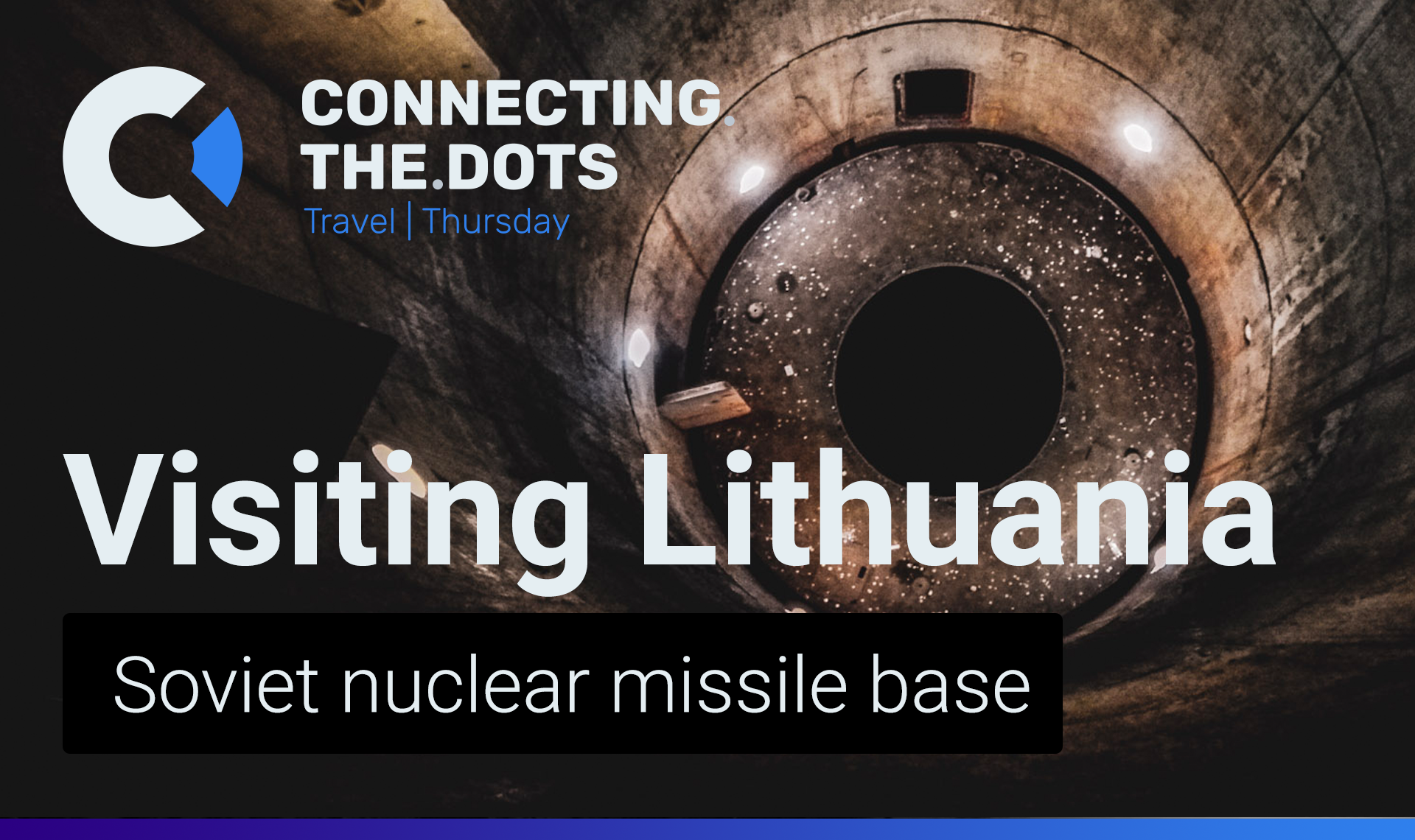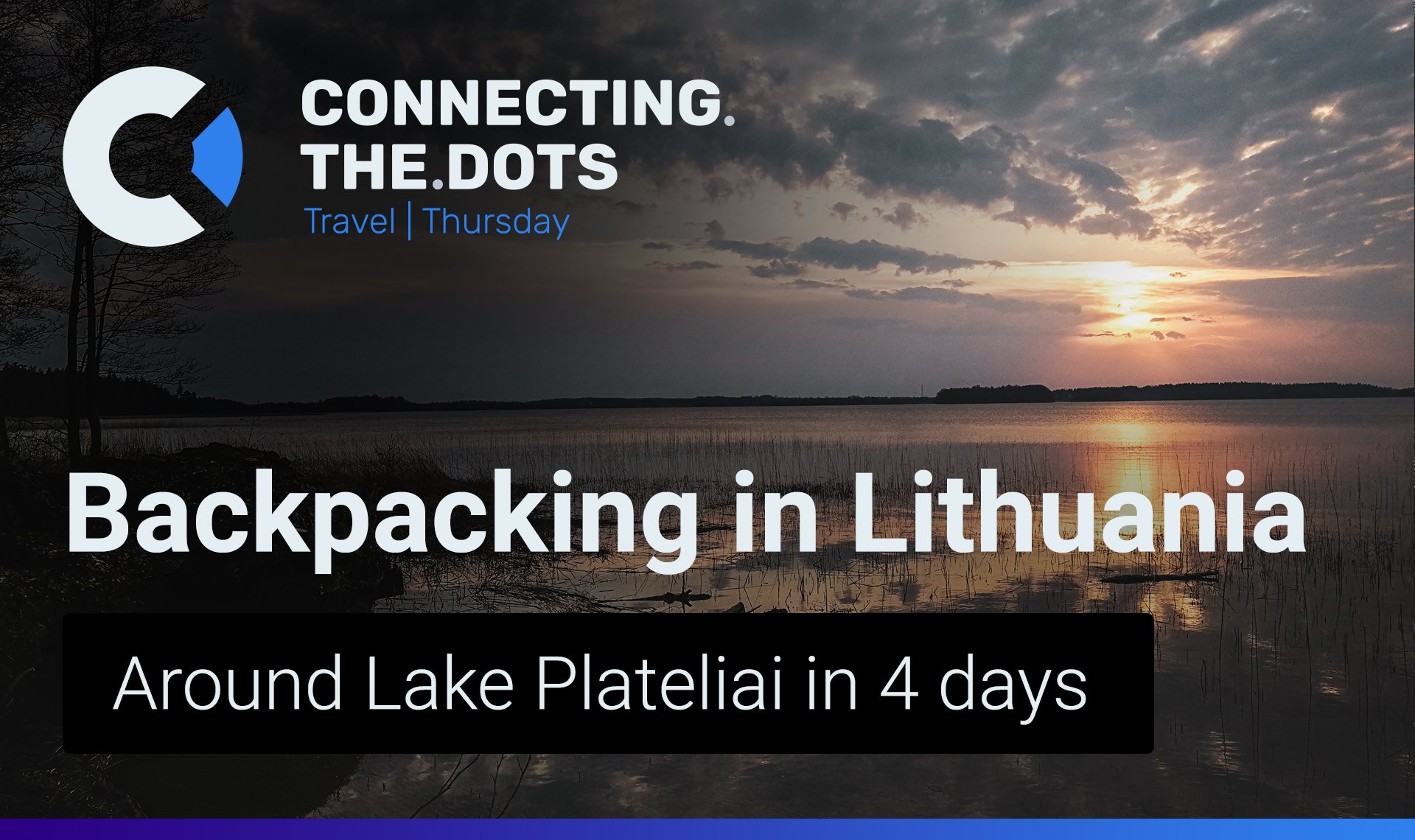
With an awakening nature, one’s desire to spend time outside awakens as well. Good thing that there are plenty ways to do it. I had tons of easy hikes around Lithuania last year, so this time I chose to do something rather more challenging. After carefully checking the forecast of the weather we decided to go for a 4-day trek around the lake Plateliai in the Samogitia National Park.
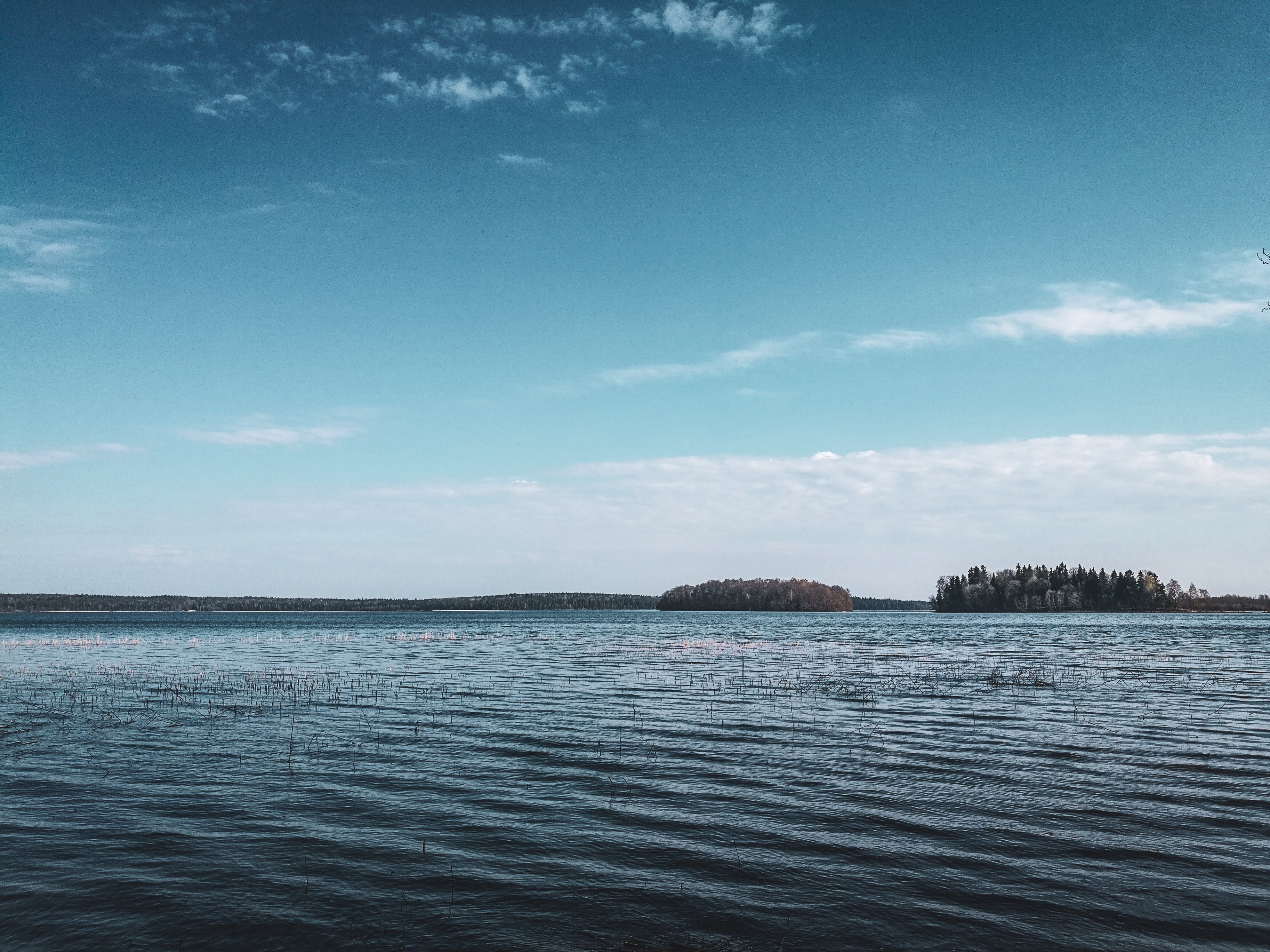
Lake Plateliai
The lake itself is the biggest lake in Samogitia and the 9th biggest in Lithuania. With a max depth of 47 m, the lake's bottom varies as it has even 7 islands with one of them housing a castle back in the old days. To make it more precise, two castles at different times, with one of them being a castle of Queen Bona Sforza. There used to be a bridge to connect the island with the old settlement of Plateliai. You can find remains of the bridge underwater and that is not the only interesting thing archeologists found in the lake Plateliai. It is famous for its underwater archeology, scientists think that the water level used to be much lower and some of the islands are currently hiding underwater.
If that is not enough you can add 'boring' boats, from Vytautas the Great times, were found hiding in the depths of the lake, archeologists discovered some interesting stone formations underwater from pagan times as well. It is calculated that the water level of the lake 500 – 2500 years ago was 3 – 3,5 m lower and a relatively recently built Babrungėnai windmill had risen it even further.

The origins of the name Plateliai is associated with the word „platus” (wide). It wouldn't be Lithuania if there was no legend for the place.
Some whisper that once upon a time there was a big lake up far in the north and one day a tornado sucked up all of its water which created huge clouds of rain. Once a local girl from Samogitia saw the cloud, she shouted „Ale tā lej!… Platē lej!“ (second part of it means „wide rain”, my guess for the first part of it would be „well, that is the rain”). These words were the keyword for the lake and it dropped down on the hills to fill the gaps between them forming the lake Plateliai.
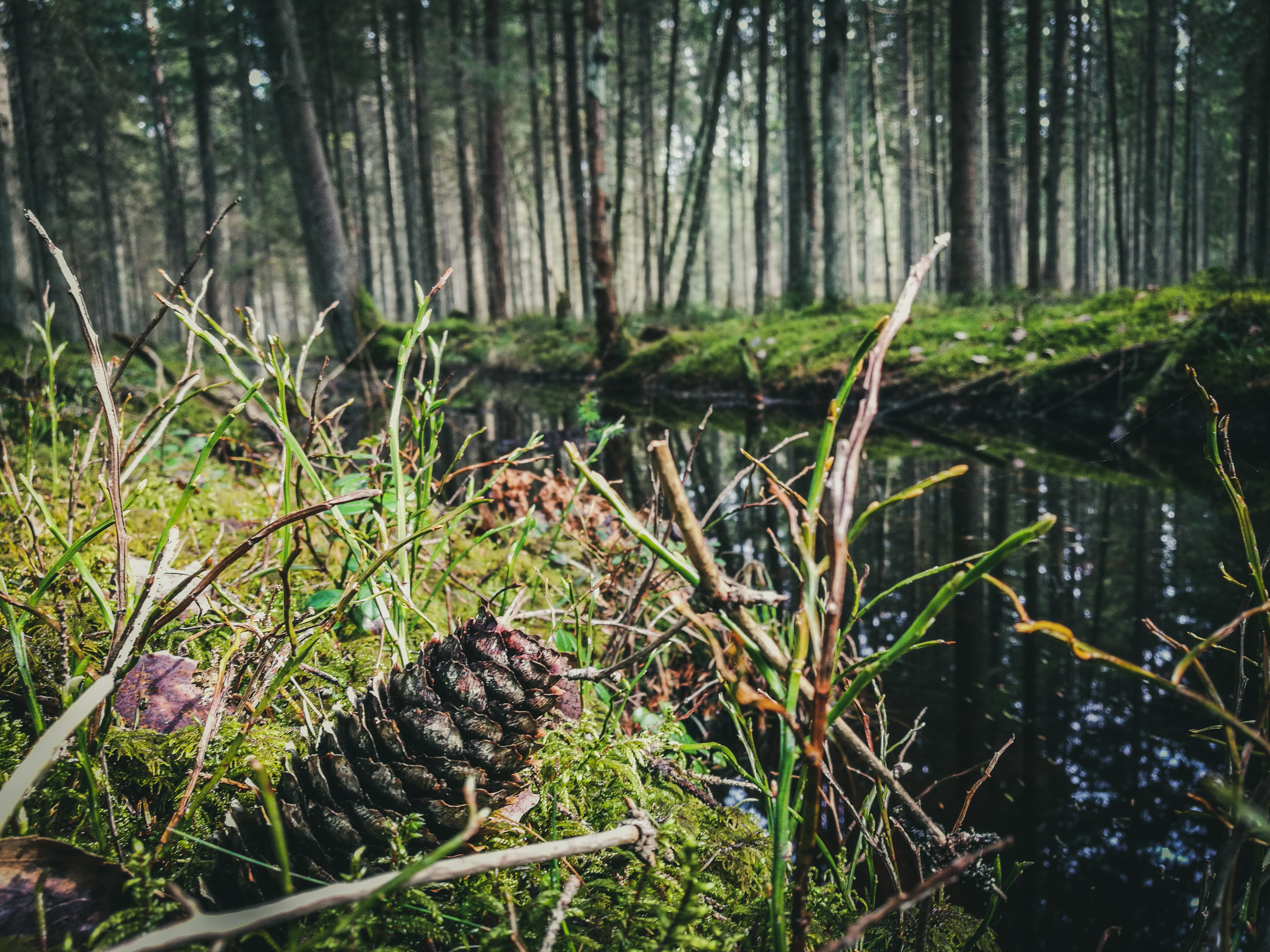
Samogitia National Park
Even though lake Plateliai is the main attraction in the park, it has plenty more to offer. Like almost everything else in Lithuania, the landscape was formed when the glacier of the last ice age withdrew. Keeping in mind that Samogitia in Lithuanian is called „Žemaitija” (lowlands), the relief is relatively high, with some hills reaching up to 150-190 m. Almost half of the park is covered by forest and only 7% by lakes. It wouldn't be Lithuania without marshlands and swamps, Samogitia National Park is not an exception In the north corner of the park lies the biggest boulder in Lithuania – Barstyčiai stone. In these ancient lands, coexisting with many other rare species breeds some of the last of wolves of Lithuania.
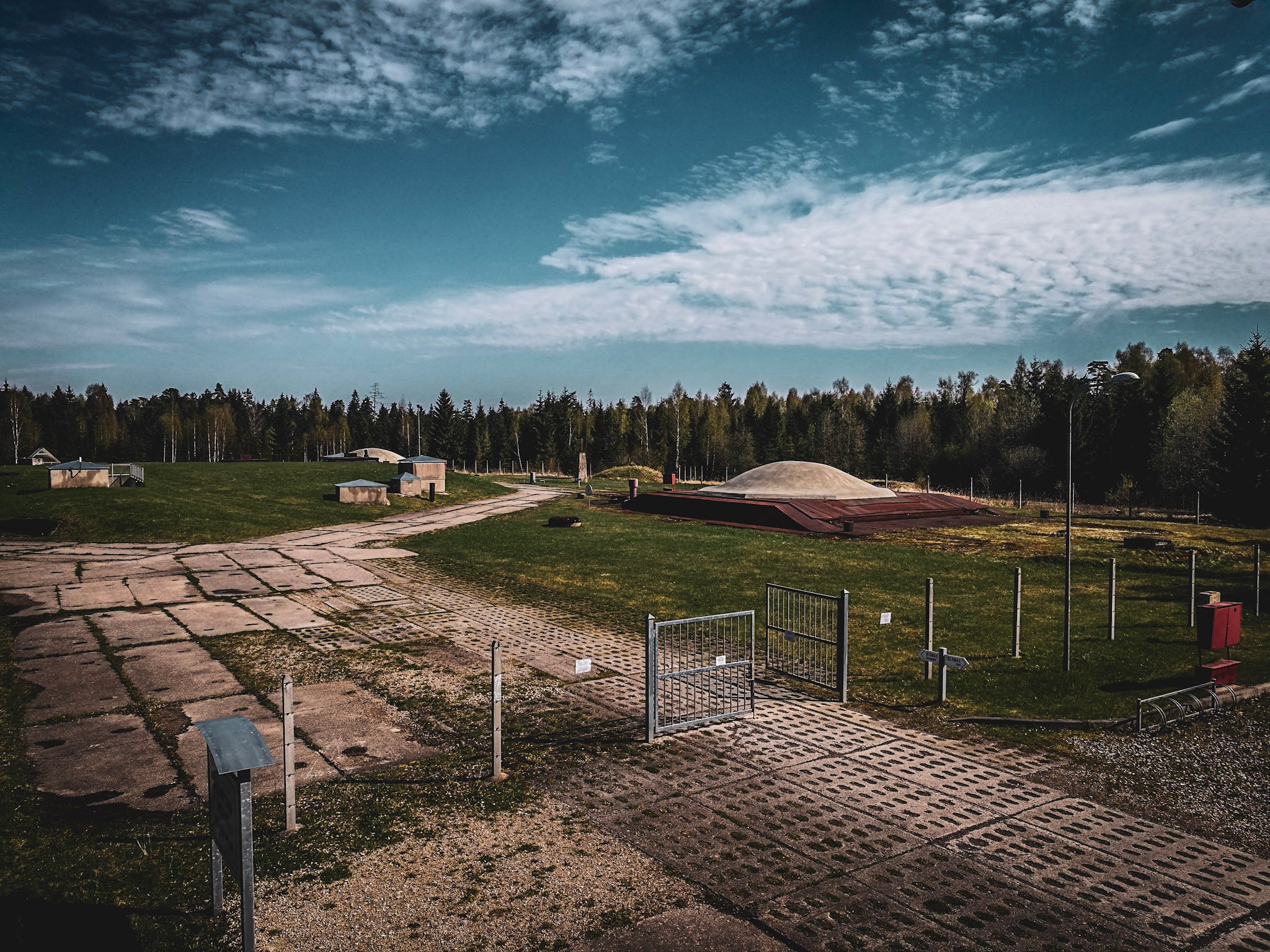
Plokštinė missile base – the Cold War Museum
Not all of the park is hilly, on the east part of it you can find a relatively flat land called „plokštinė” (plokščias means flat). Here in occupation times, the Soviets build a secret missile base. If you are interested in the history of the last century this is the place to go, and for me personally, this THE PLACE to go in Lithuania. The missile base stands in a relatively good shape with a museum of the Cold War inside of it. I already wrote a separate article about it as it worth my time and that part of the history must be remembered, especially with current tensions between east and west in 2018.
You can find it here: http://ctdots.eu/places/lithuania/plokstine-missile-base/
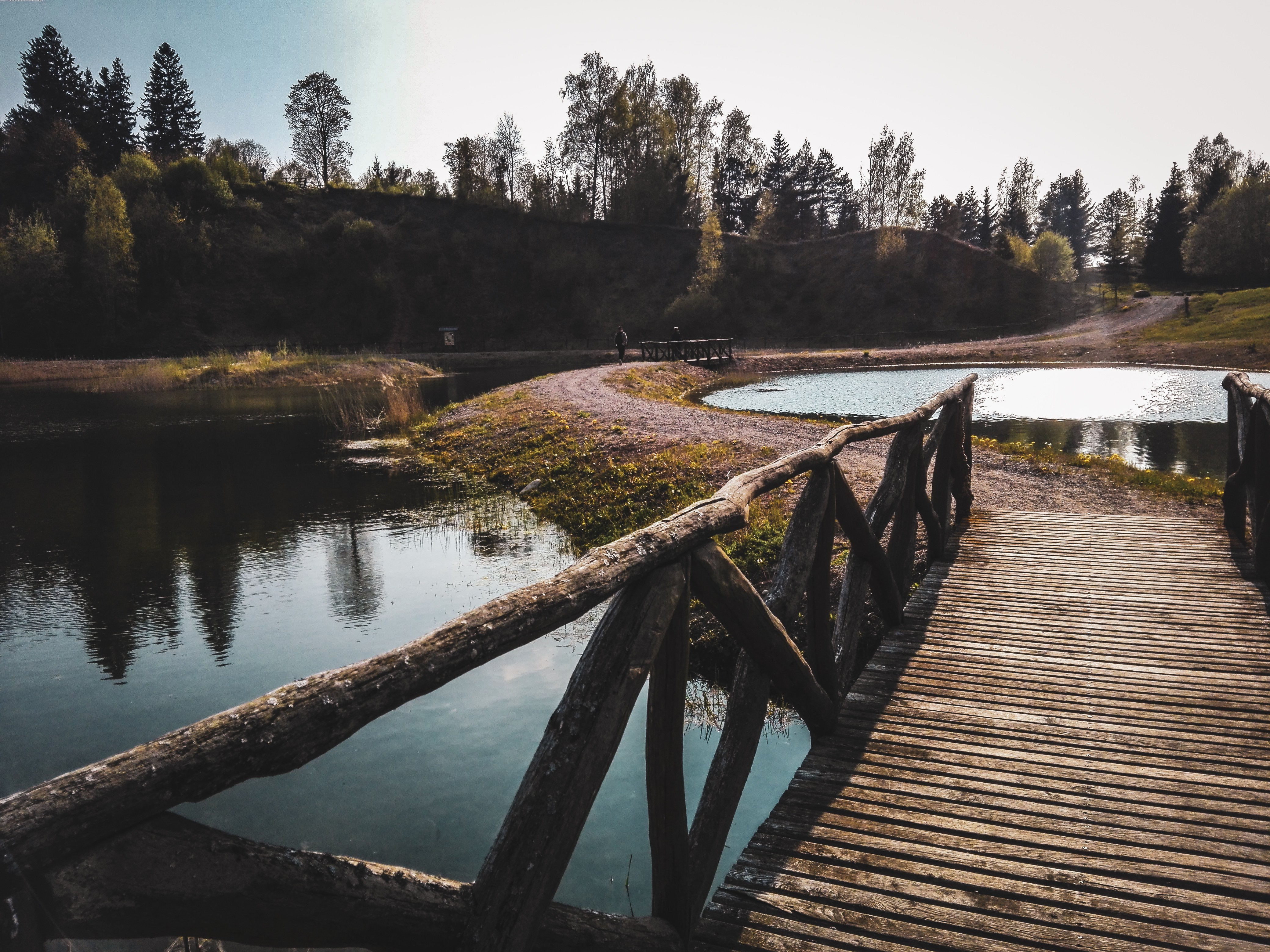
Gardai esker
Thought this place, not on this road, it is still a part of Samogitia National Park and if there is a possibility, I highly recommend to visit the place. The landscape is quite unique and you can see the terraforming power of glaciers in full power. Esker is basically a narrow, but relatively long hill formed by withdrawing glacier.
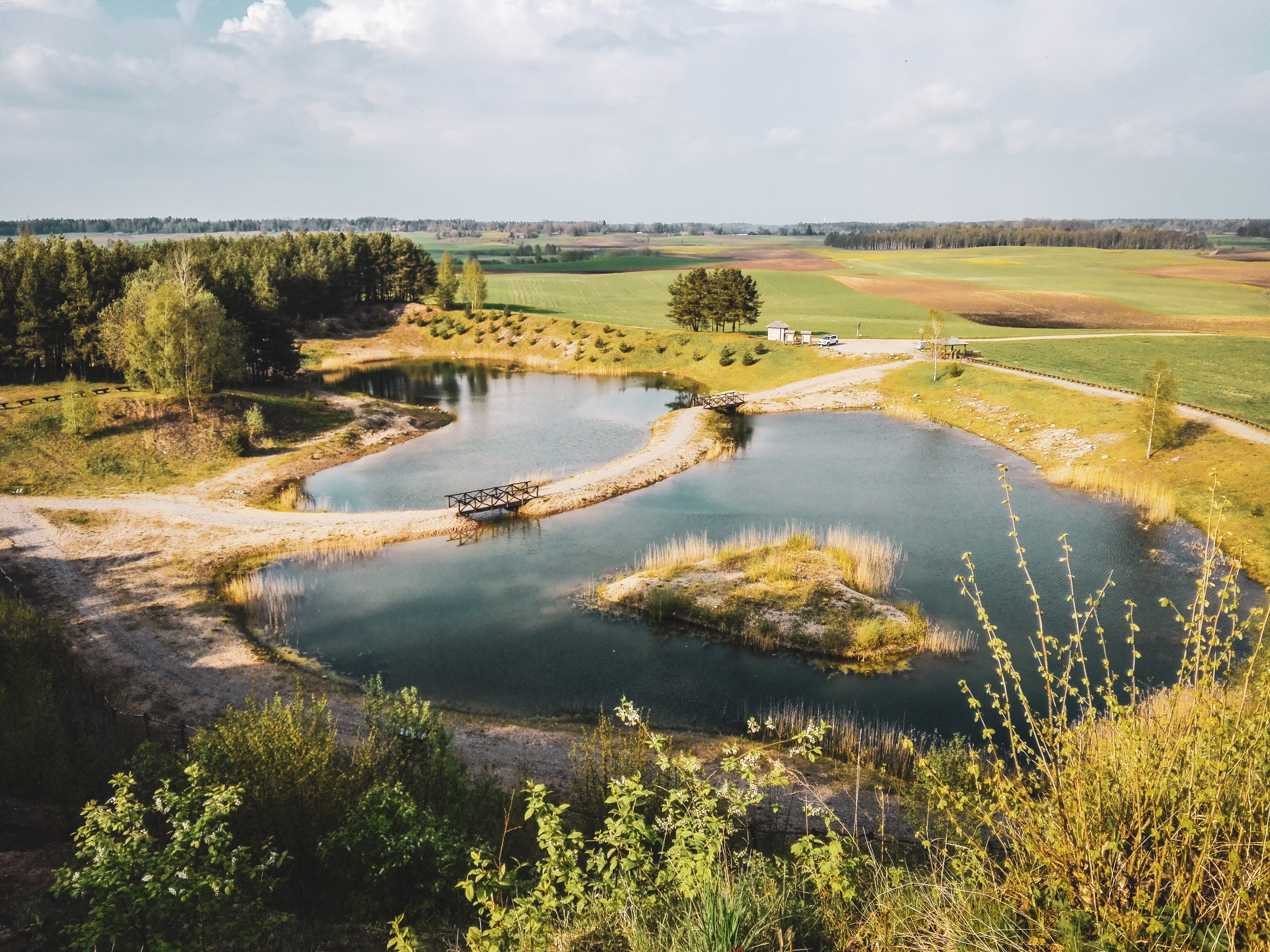
Trek around lake Plateliai: day 1
We met 06h30 at the train station, just 20 minutes before departure of the train. So early, just to save as much time as we can, as we need to spend 3h20 on a ride with a train from the capital of Lithuania – Vilnius to Plunge – nearest major city to the lake Plateliai. Temperatures are still low, just above zero when we left the train station, so we need to walk during the midday and have a camp prepared before the sunset, 21h00.
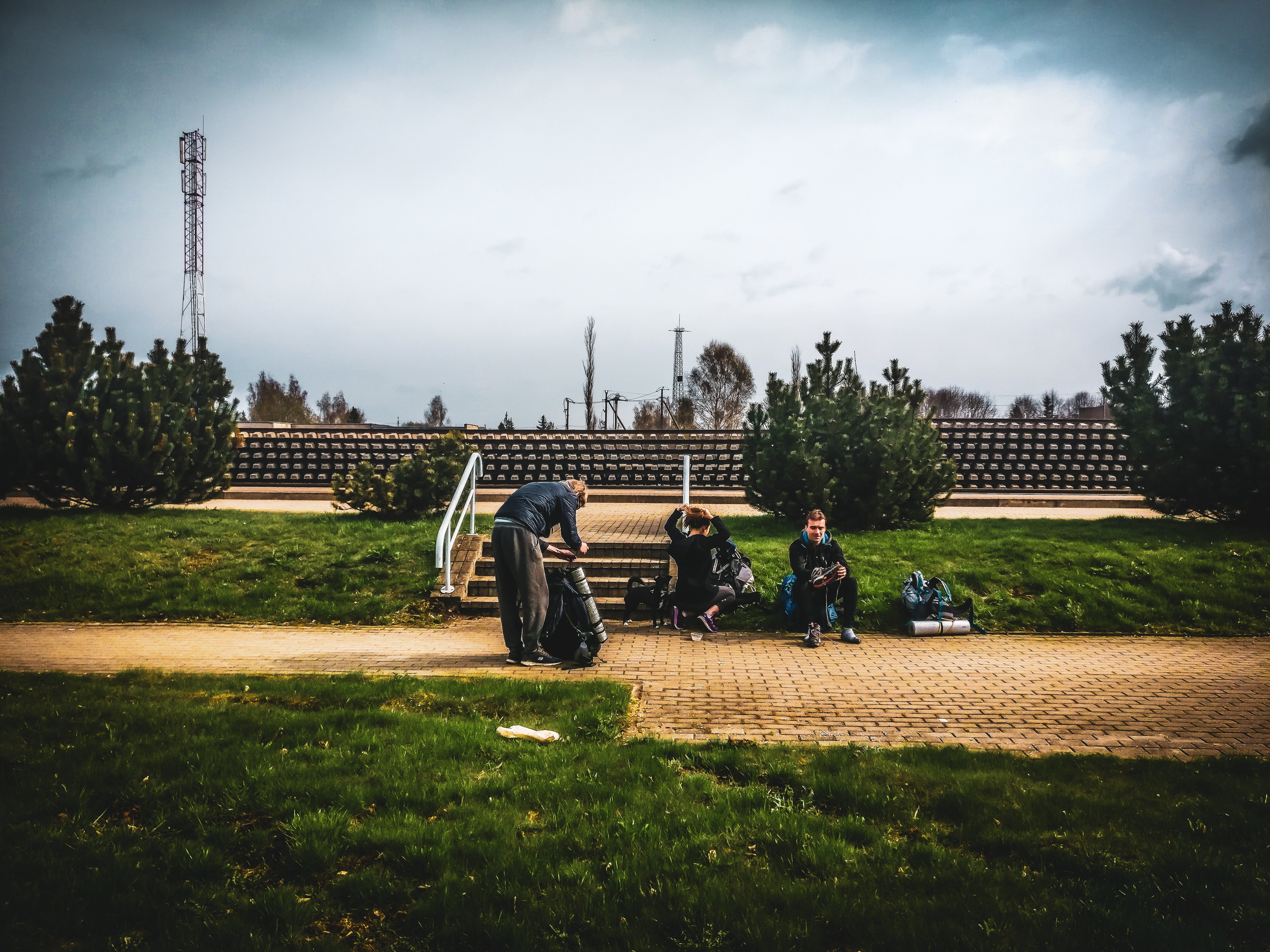
Photo by @doskinas
Small tip: if you want to take your four-legged friend to the train with you on the first class, you need to buy a ticket for him. As for other carriage, it seems it is for free. I took 15kg+ bag and just put it on a special shelf. I still don’t understand where the whole weight comes from. I don't trek much, so hopefully, at the end of the season, I'll be able to do a similar trip with less than 10 kg.
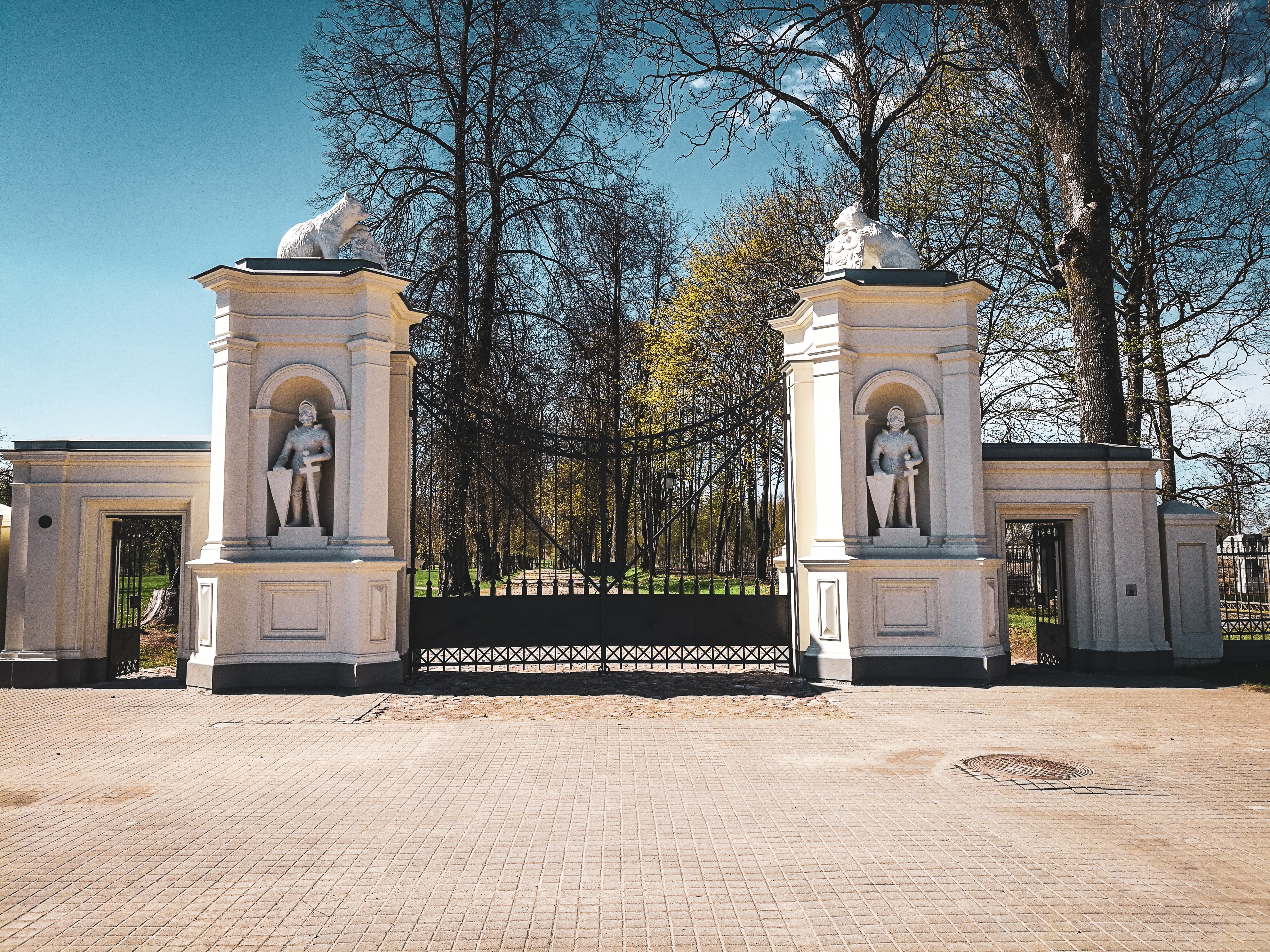
Plungė
The real trip started 10h10 when we finally arrived at the train station of Plungė. The city itself has around 20,000 people and by the Lithuanian standards is a relatively big city, list 16th by population. Plungė is known for „Vici” crabsticks which are sold across Europe. The dark side of the story is that before the Holocaust the half of the city's population was Jewish and almost all of it was executed by Nazis with the help of some locals during the World War II.
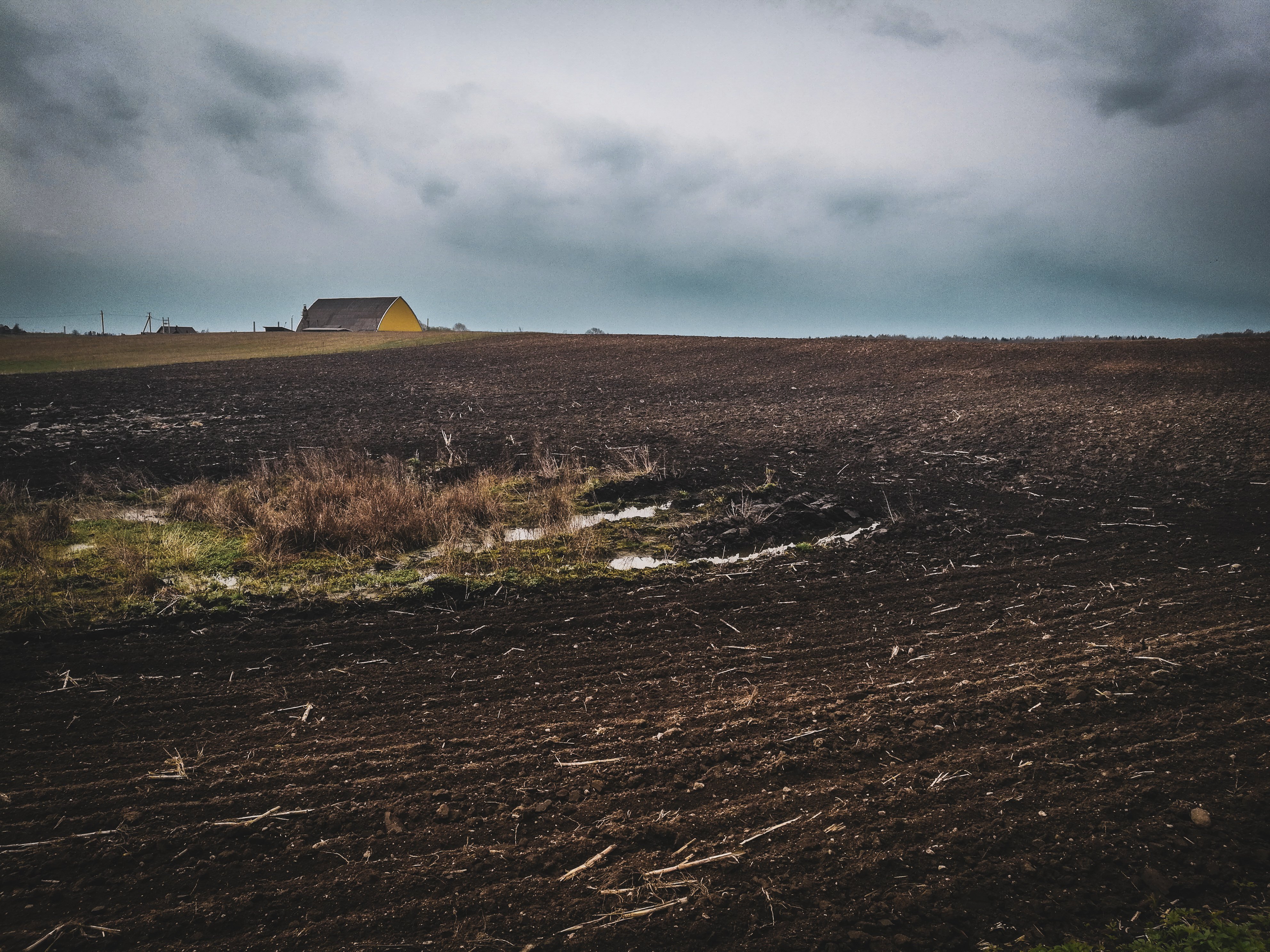
The start of the trip, as usual, is the most boring. We took plenty of stops just to make ourselves comfortable with our backpacks and clothing. Adding to that we had to walk 5 km just to enter to park and 5 km more to enter an actual forest, so if come here with a car – good for you. The positive side of this that if you are not local, or a complete city person, you'll be able to see a typical life of a countryside.
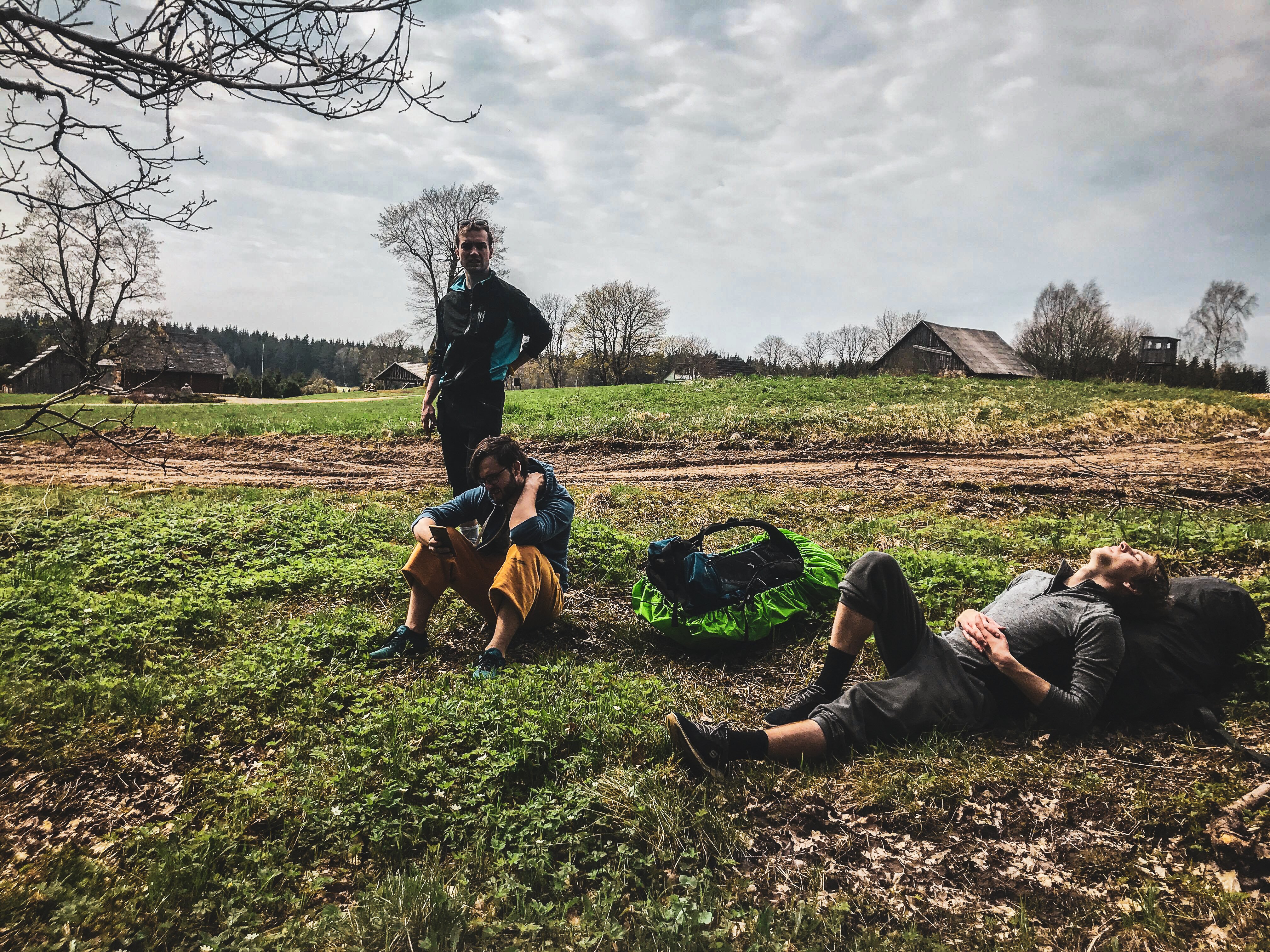
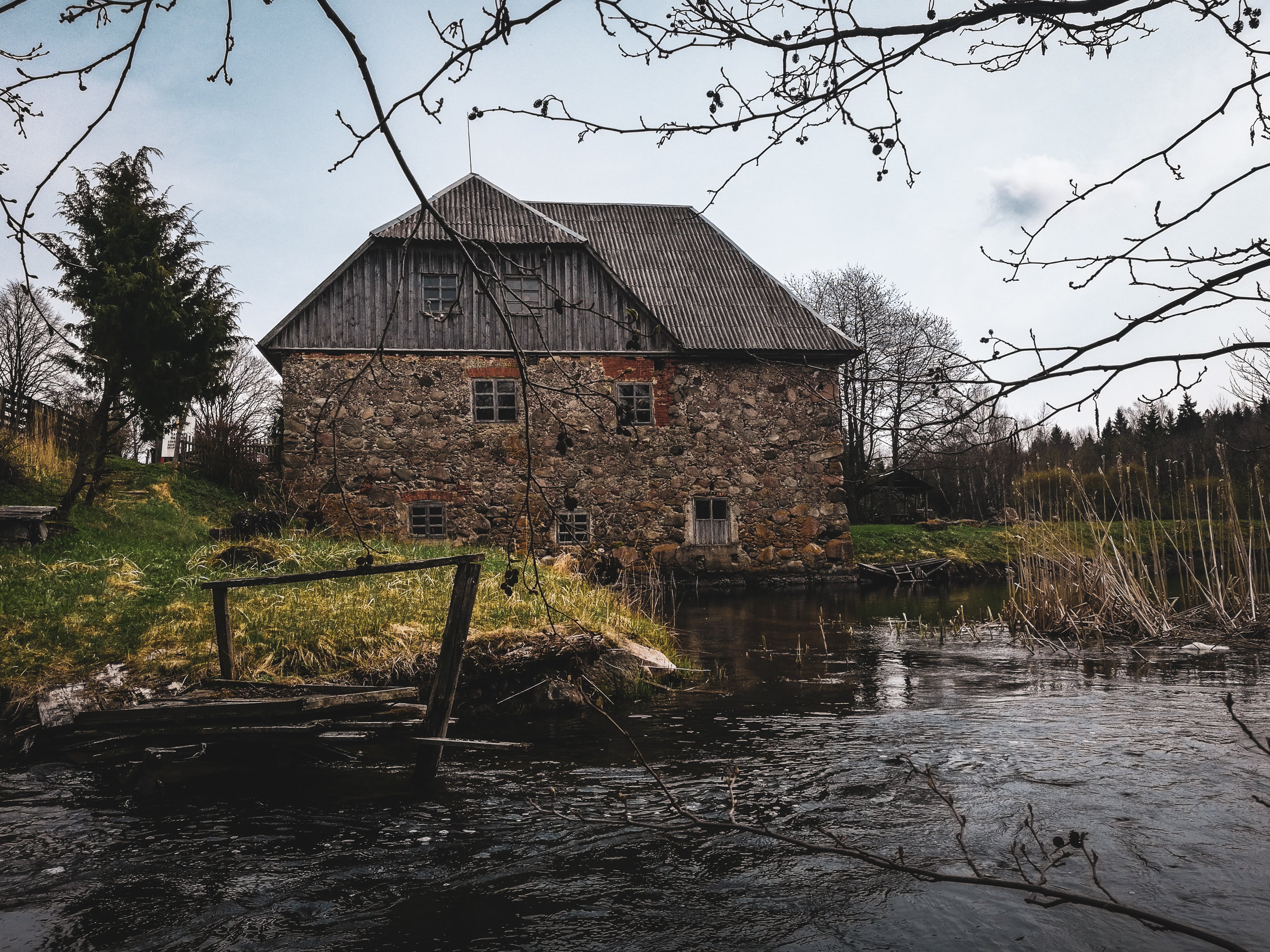
Babrungėnai watermill
13km from Plungė we reached a first interesting point – Babrungėnai watermill. The construction of the watermill led to even further rising of the water level in the lake. The watermill was first time mentioned in 1791 and was working until 1977. In 1989 an artist Leonardas Černiauskas bought the abandoned watermill and after 7 years of restoration, he opened it as an art gallery. You can visit it for 2 €. Babrungėnai watermill is the only building of the kind made out of stone in Samogitia National Park.
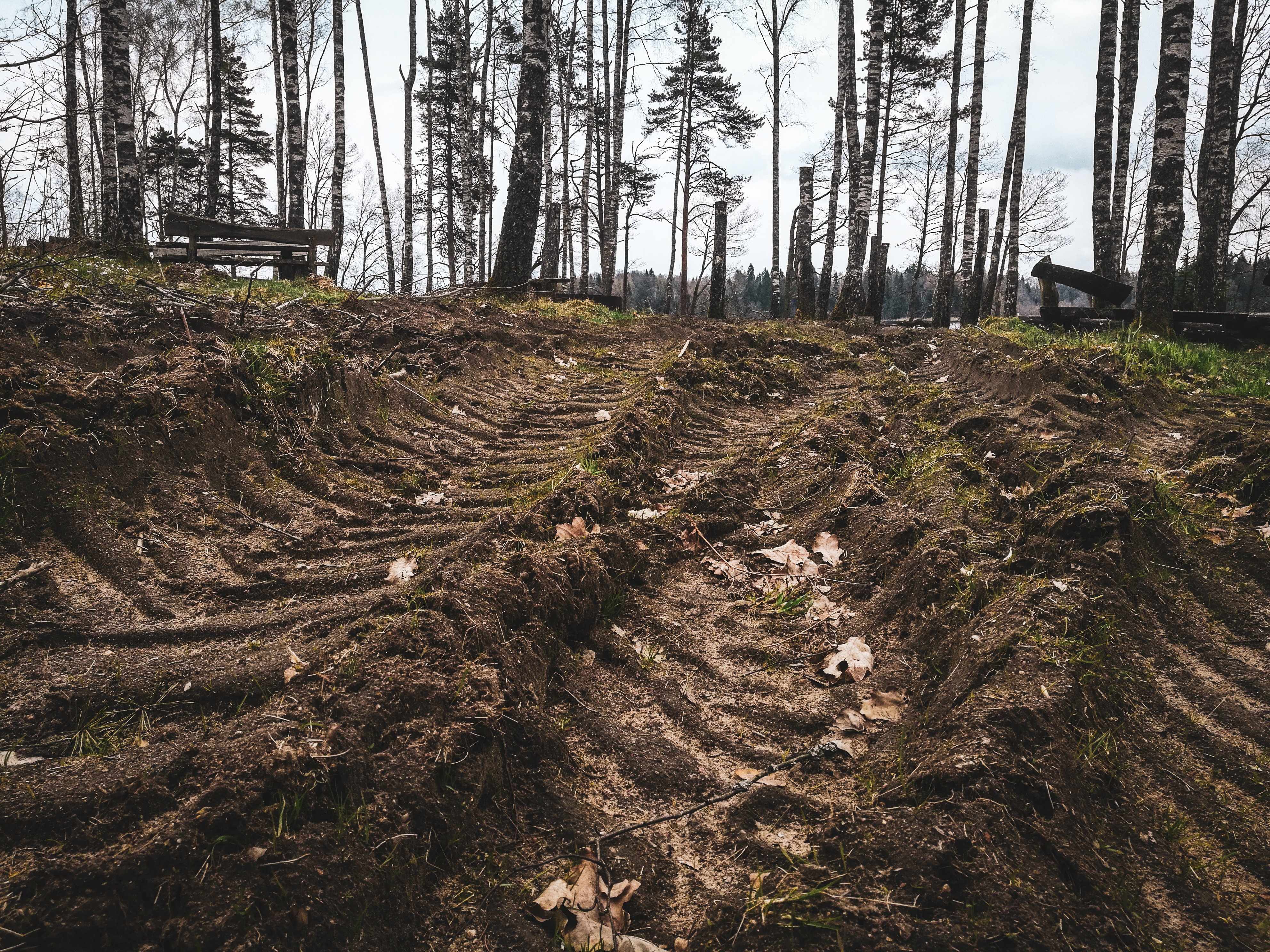
Beržynėlis campsite
It wasn't that far for our final destination for the day, after 3 km of walking we reached 3-star campsite „Beržynėlis”. I can hardly describe the shape of it, friends told that it looks like „After the war” or „like dinosaurs lived here recently”, but it is probably that someone just doesn't do their job or simply due to lack of finances. You need to pay for camping here, of course, but since it is national, it costs only 1€ each for 5 days in the whole park. The positive side was plenty of wood laying on the ground and awesome views to Lake Plateliai.
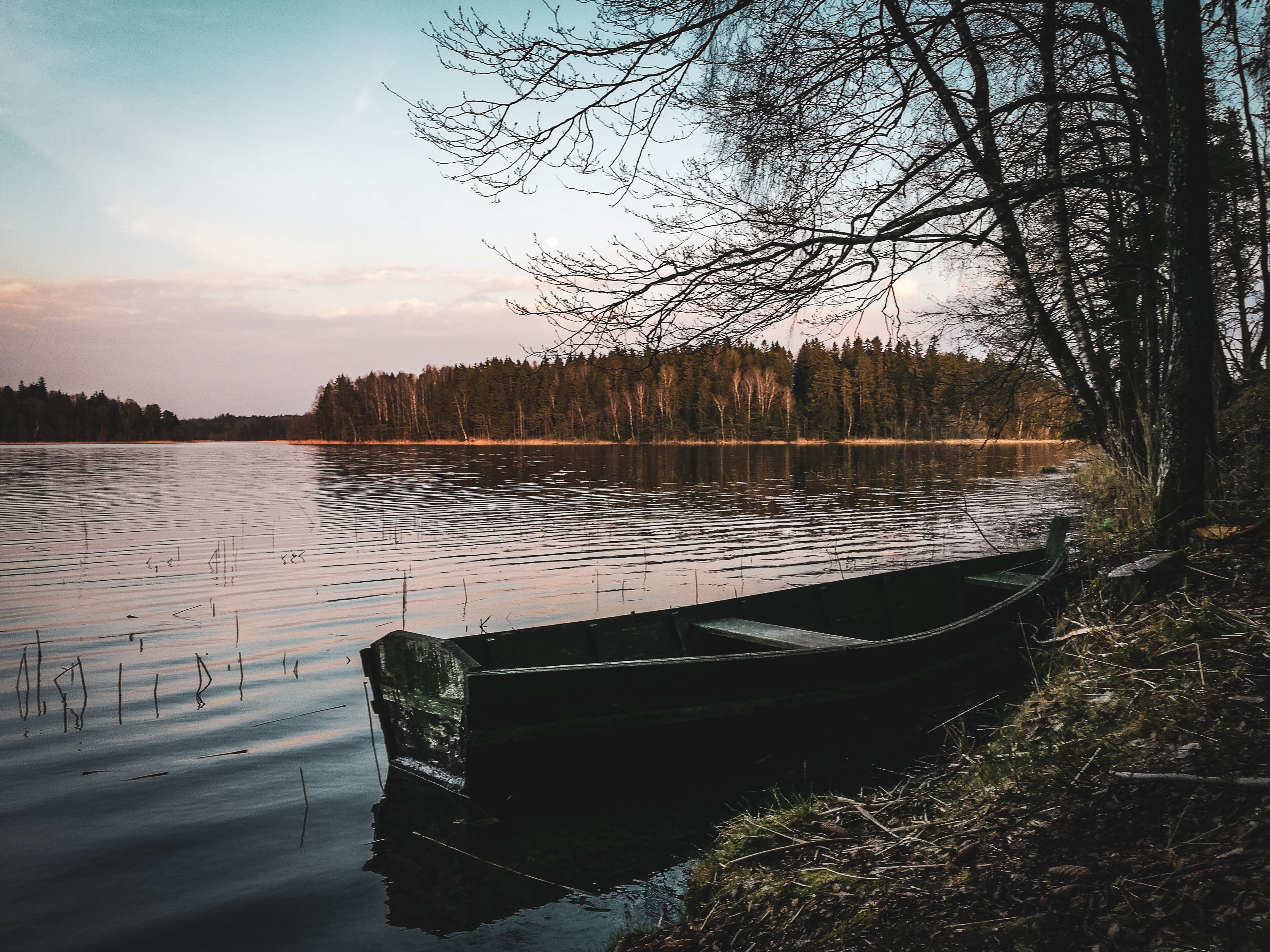
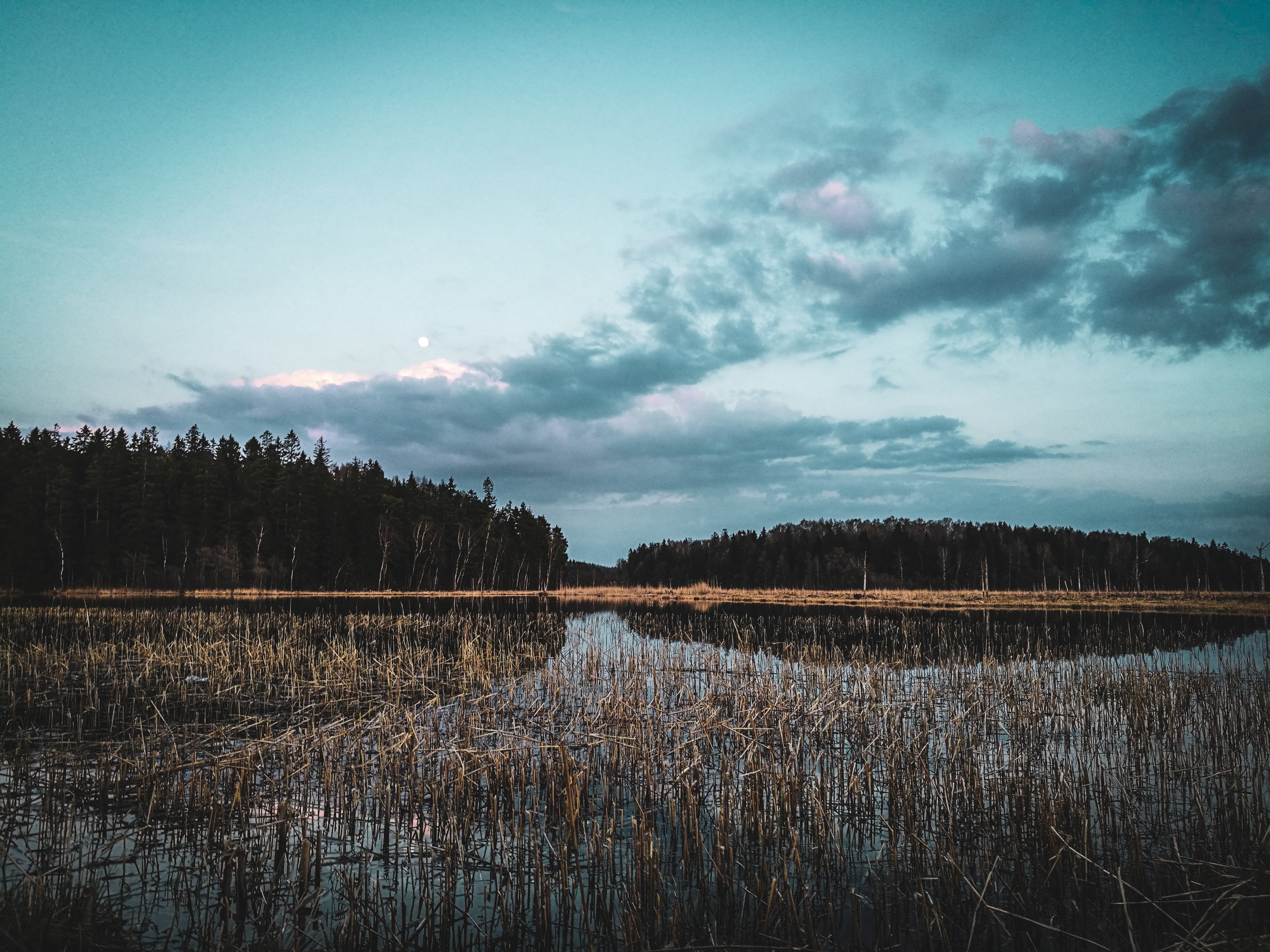
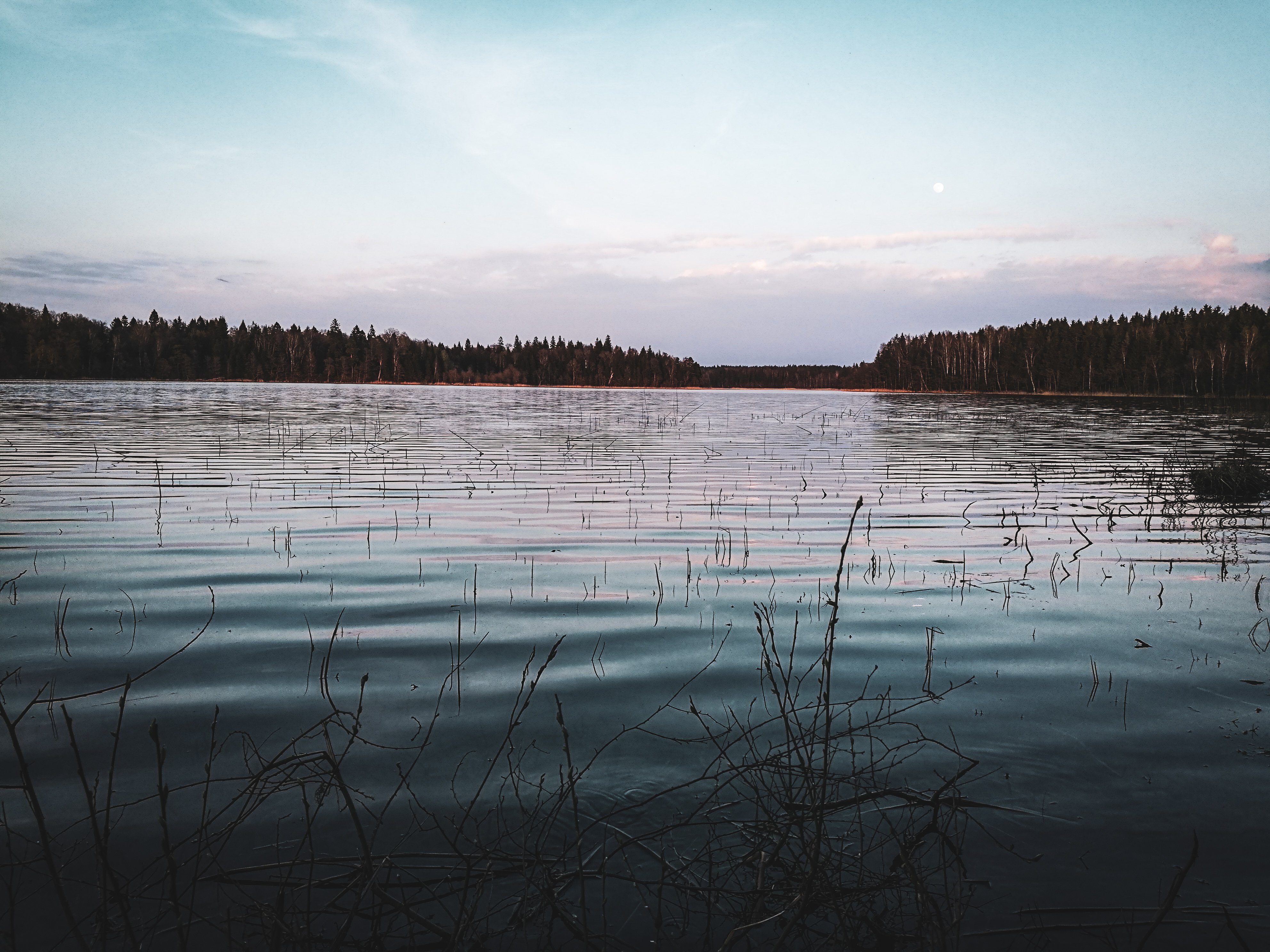
Trek around lake Plateliai: Day 2
We woke up late, as night was not as pleasant as we expected. It was cold, like really cold, from my own experience the only harder night I had in the tent was on the plateau of Mount Kazbek at ~4600 m elevation. The good thing that this time we can only blame ourselves and I bet the next night will be way more pleasant. We hit the road at 11h00, 1h late, during a slight rain for a 2km towards viewpoint.

Photo by @doskinas
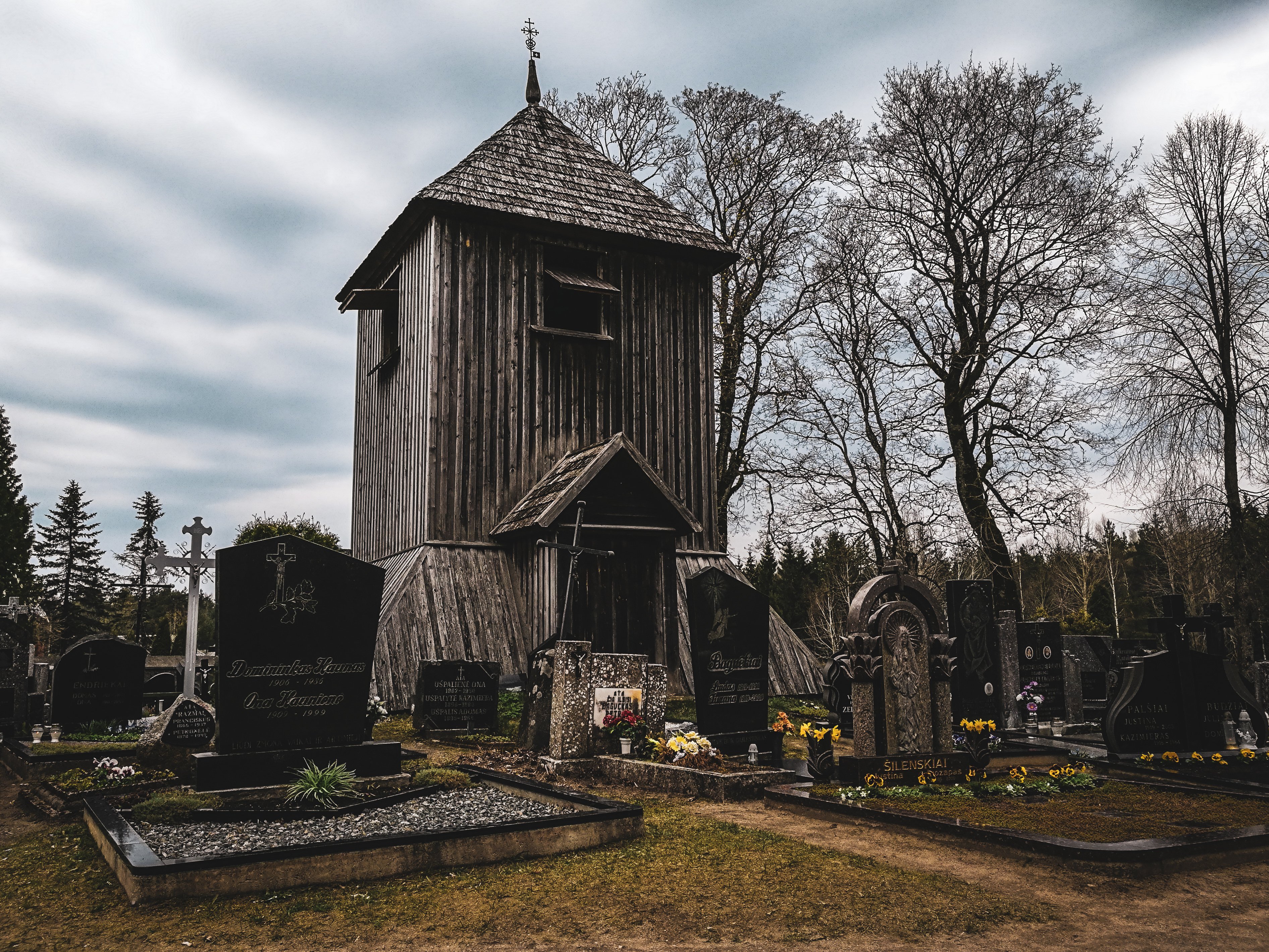
Beržoras church
But an interesting object found us earlier, after 1 km of walking we entered a small village Beržoras and its church caught our eye, so we decided to check it out. A small wooden church was a surprise, its interior looked way richer than the outside. The legend says that on this place once a statue of St. Maria appeared and villagers brought it to Plateliai. The next night the statue disappeared and returned it to its original location. After three times villagers decided to build there a church which stands to this day near the same statue, which I thought, had no meaning, so no photos this time.
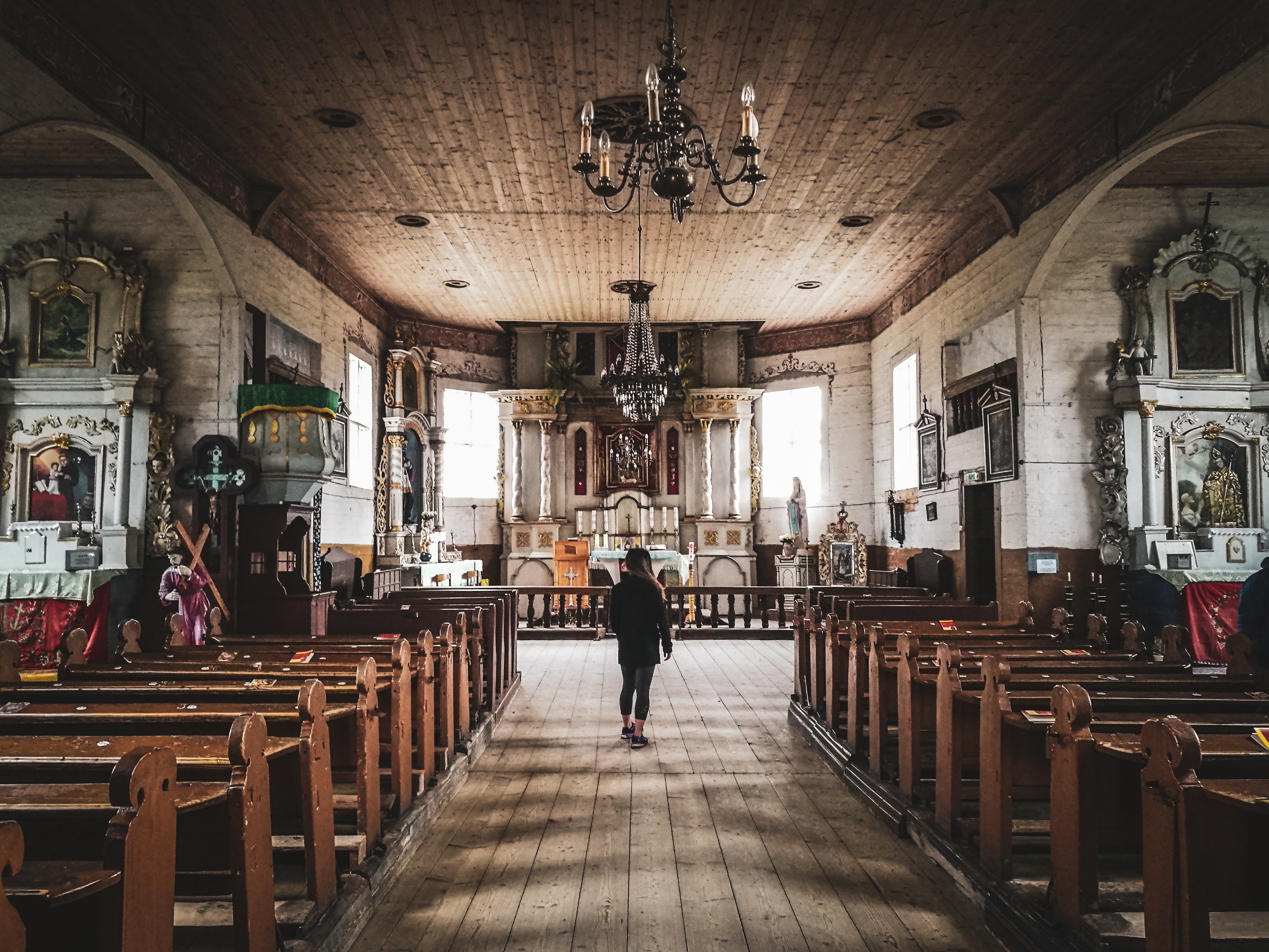
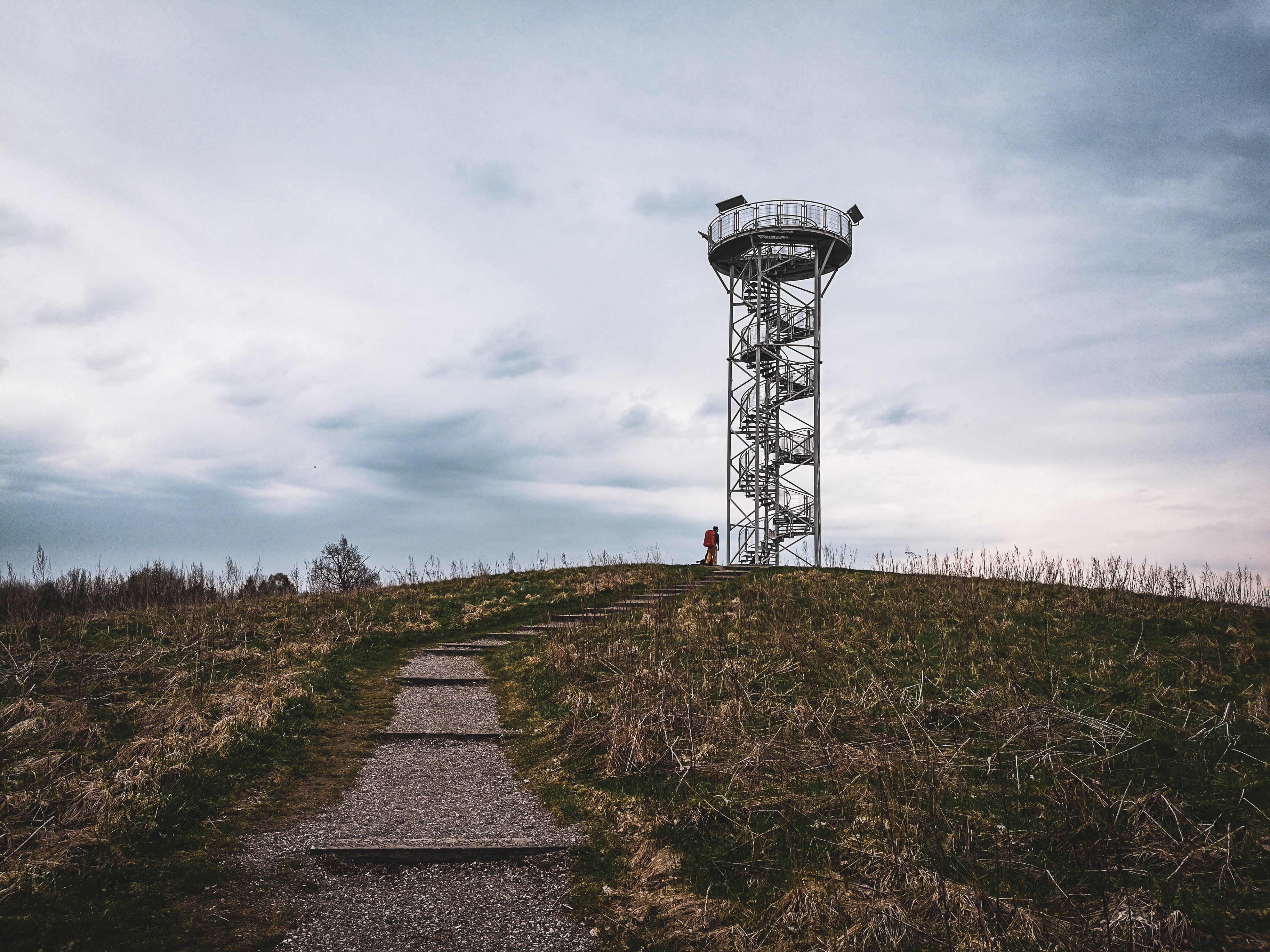
Viewpoint
The viewpoint itself is nothing special, I have seen the same design throughout Lithuania, but a panorama is definitely worth it, especially if you know what you see. It is like a minimap and the most interesting thing you can observe is the old Plateliai settlement in Šventorkalnis peninsula and the Castle Island.
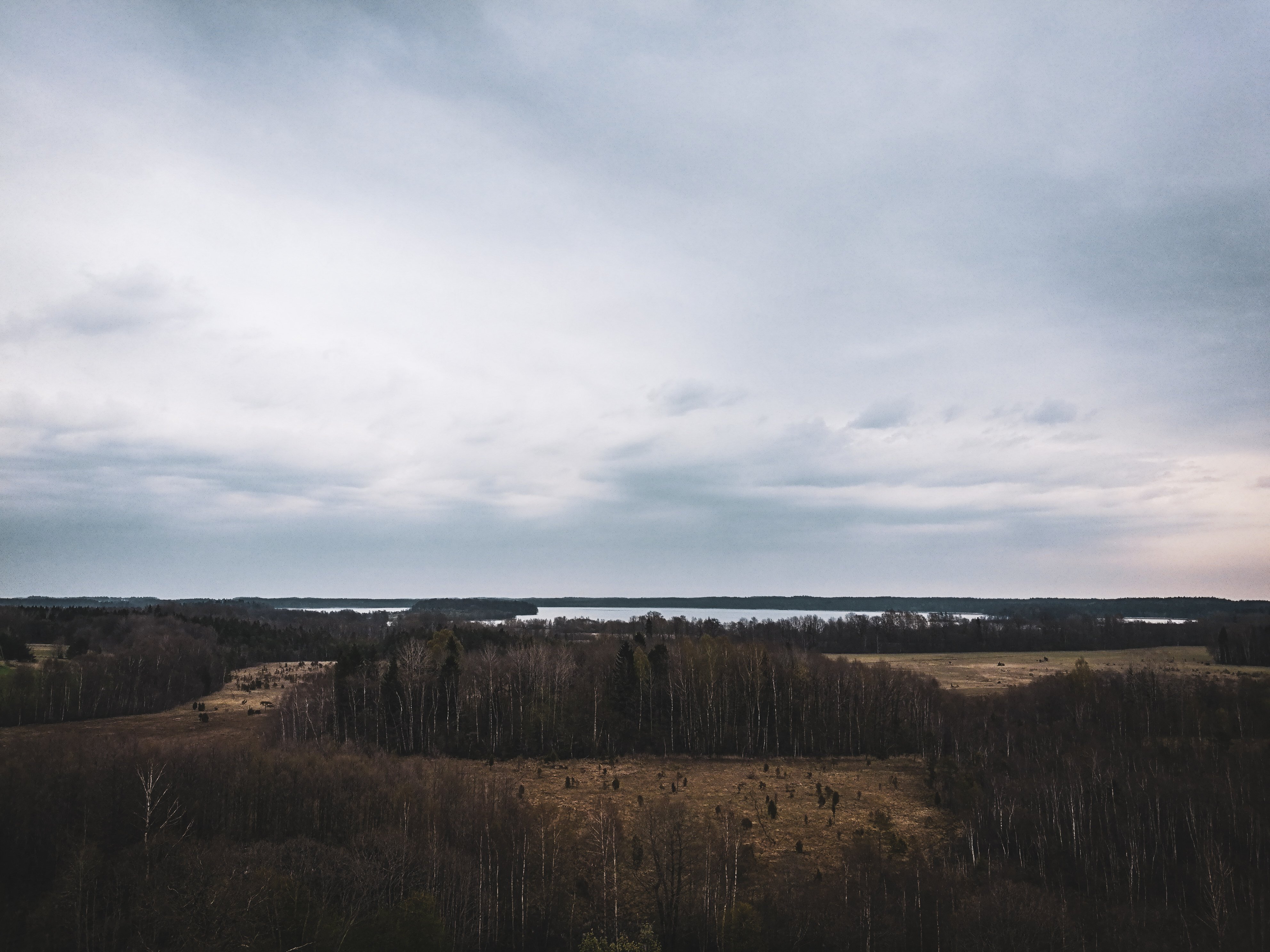
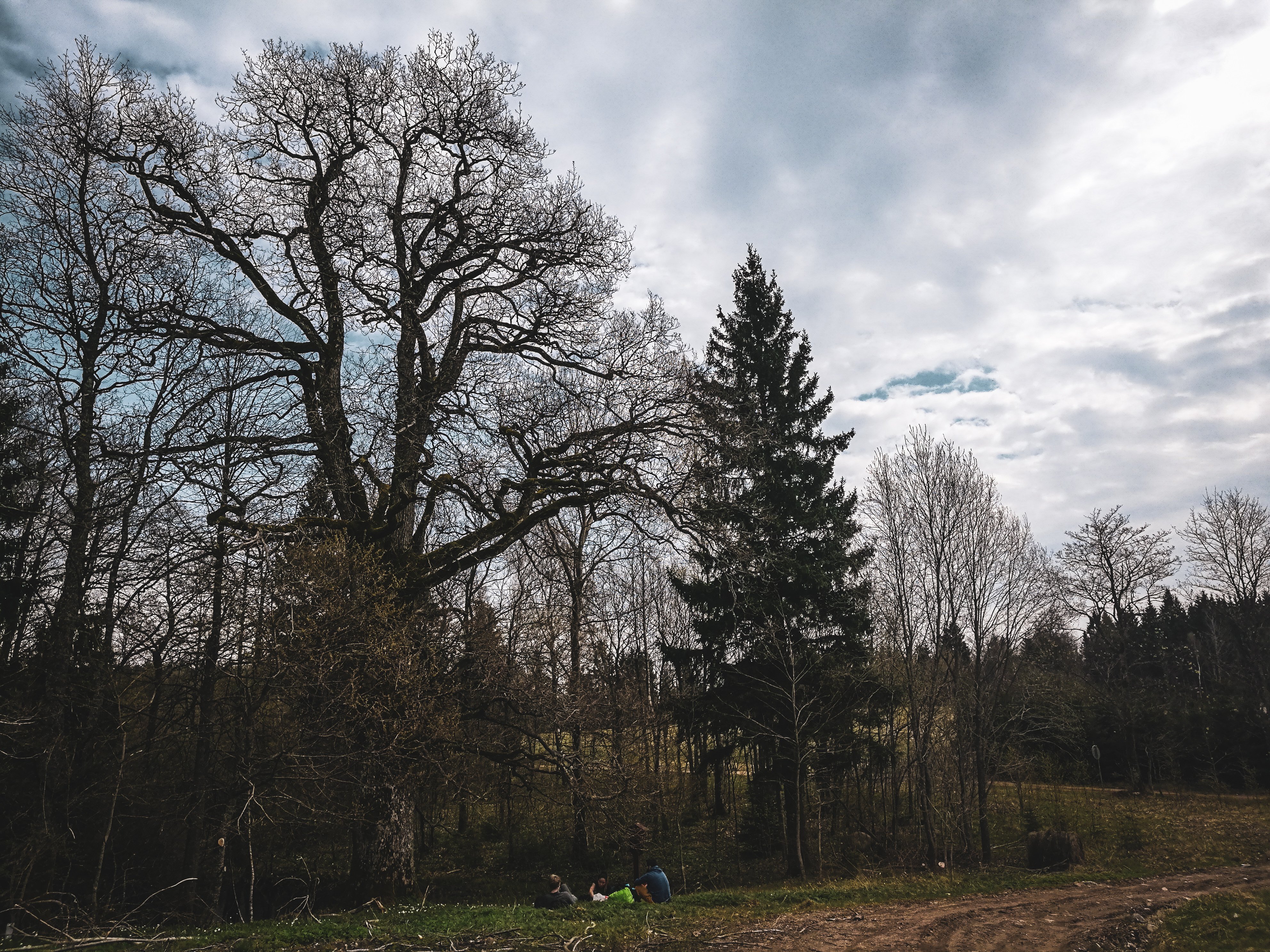
Stirbaičiai Oak
The road ahead was finally something like I was expecting from this trip. We went back through Beržoras and entered Beržoras forest which we walked for 3 km until we reached an ancient Stirbaičiai Oak. 21 m tall and 200 years old, it stands in a place where Royal forest of Grand Duchy of Lithuania once grew.
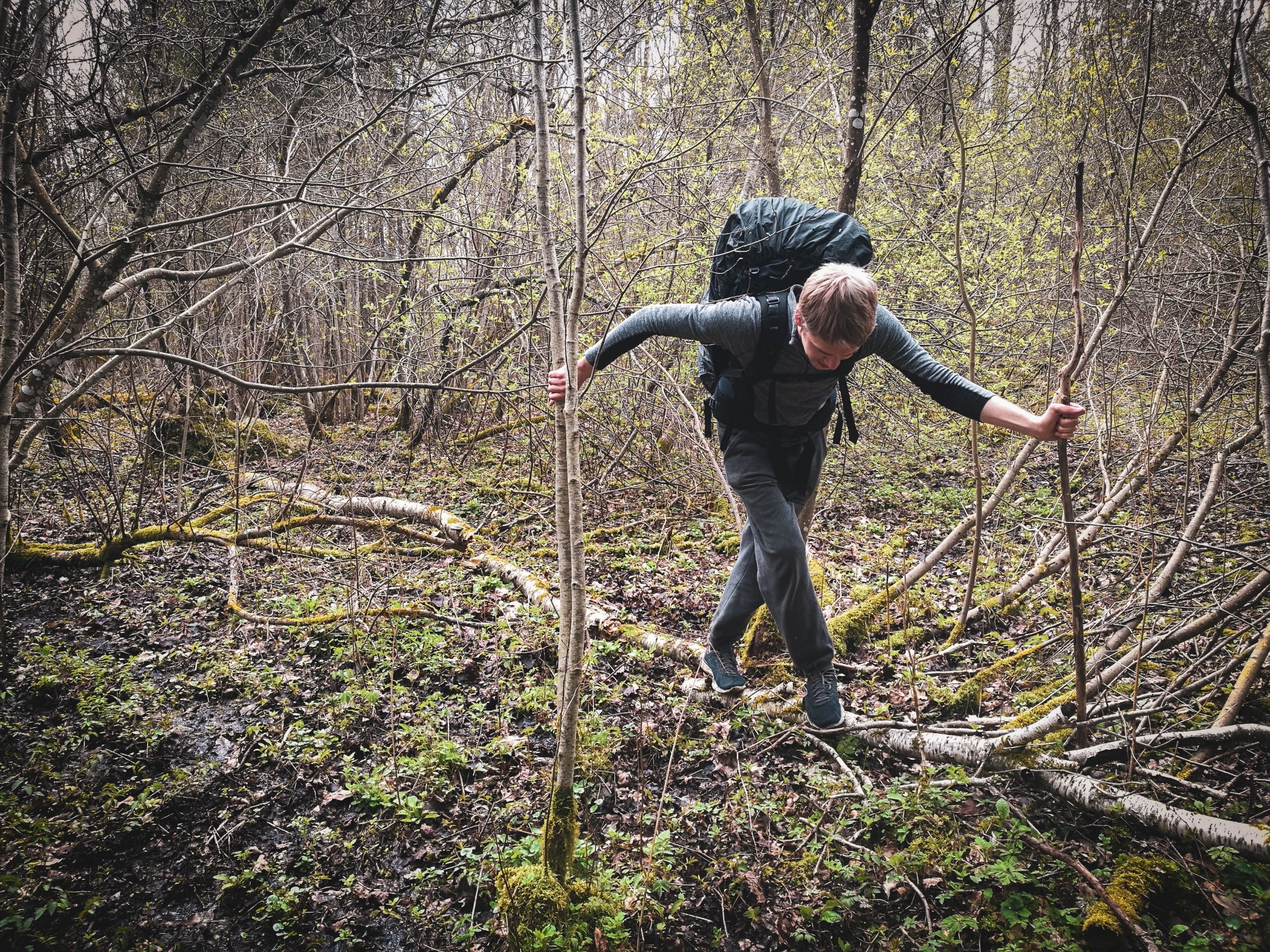
The road ahead was the most interesting part so far, we moved from marked paths to small forest ones. Not to even mention the beauty of the forest, finding a place to cross bogs we encountered was pretty fun. If you ever find yourself in a similar situation, take a stick to help balance yourself and if you fall in and the swamp starts to suck you, use it to hold on to something. In this way, you'll spread your weight and should be able to slowly pull yourself out.
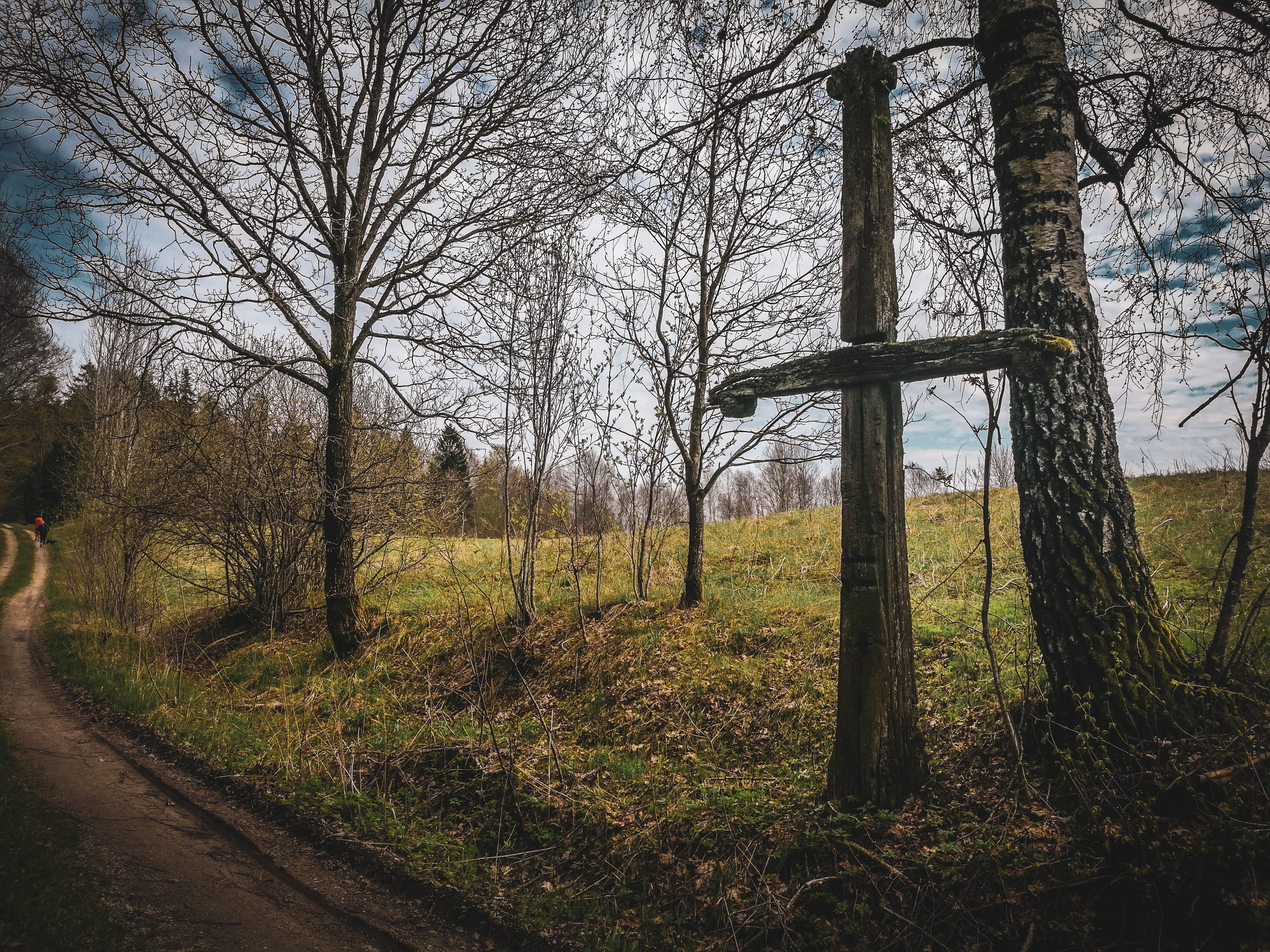
One of the biggest surprise was to find, what looked at the start as a cross, a huge wooden sword. Samogitia was the last region to be Christianized in the whole of Europe, so maybe it is their way to be Christian, or maybe some still whisper the words of the Old Gods around this region.
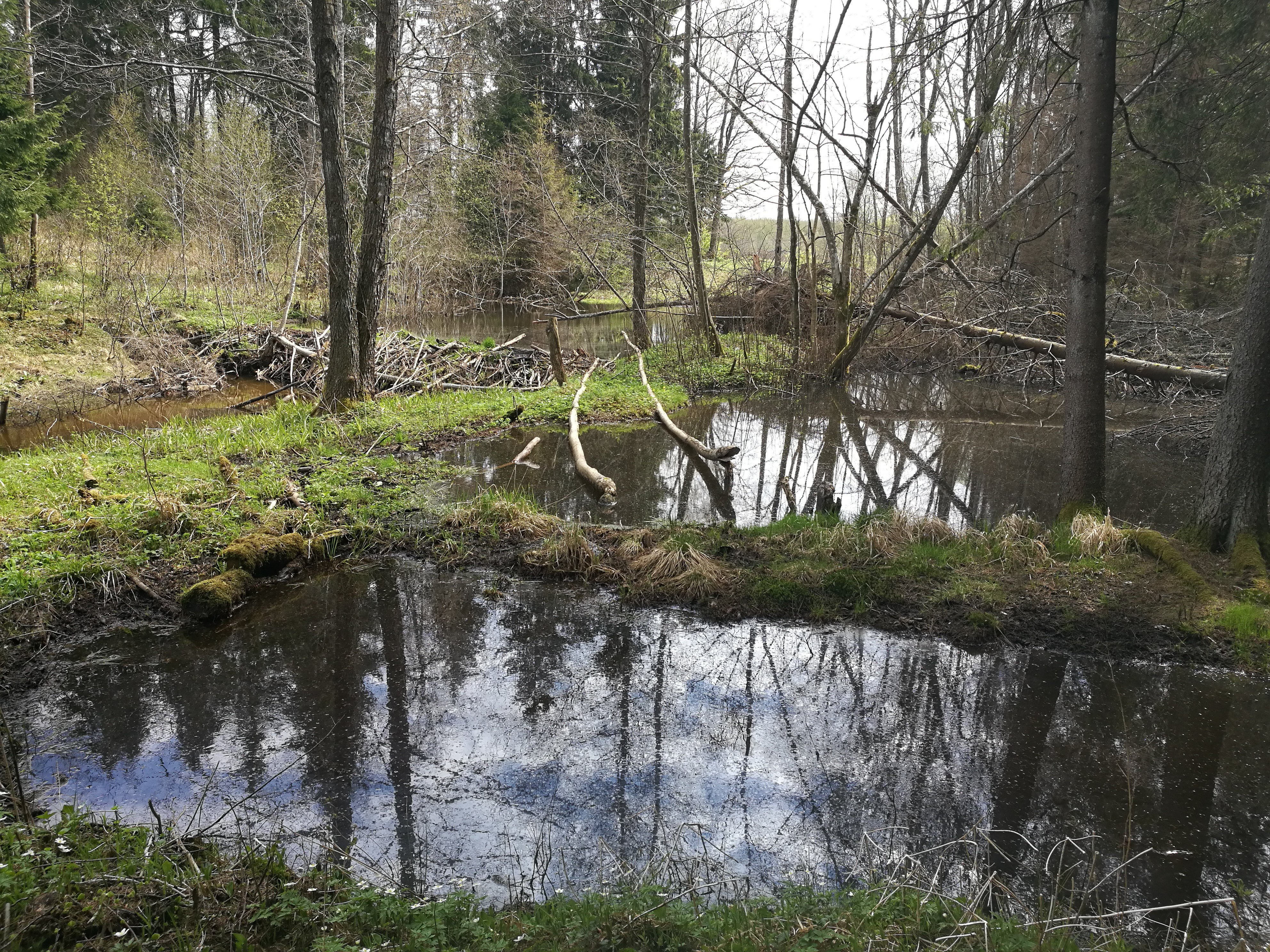
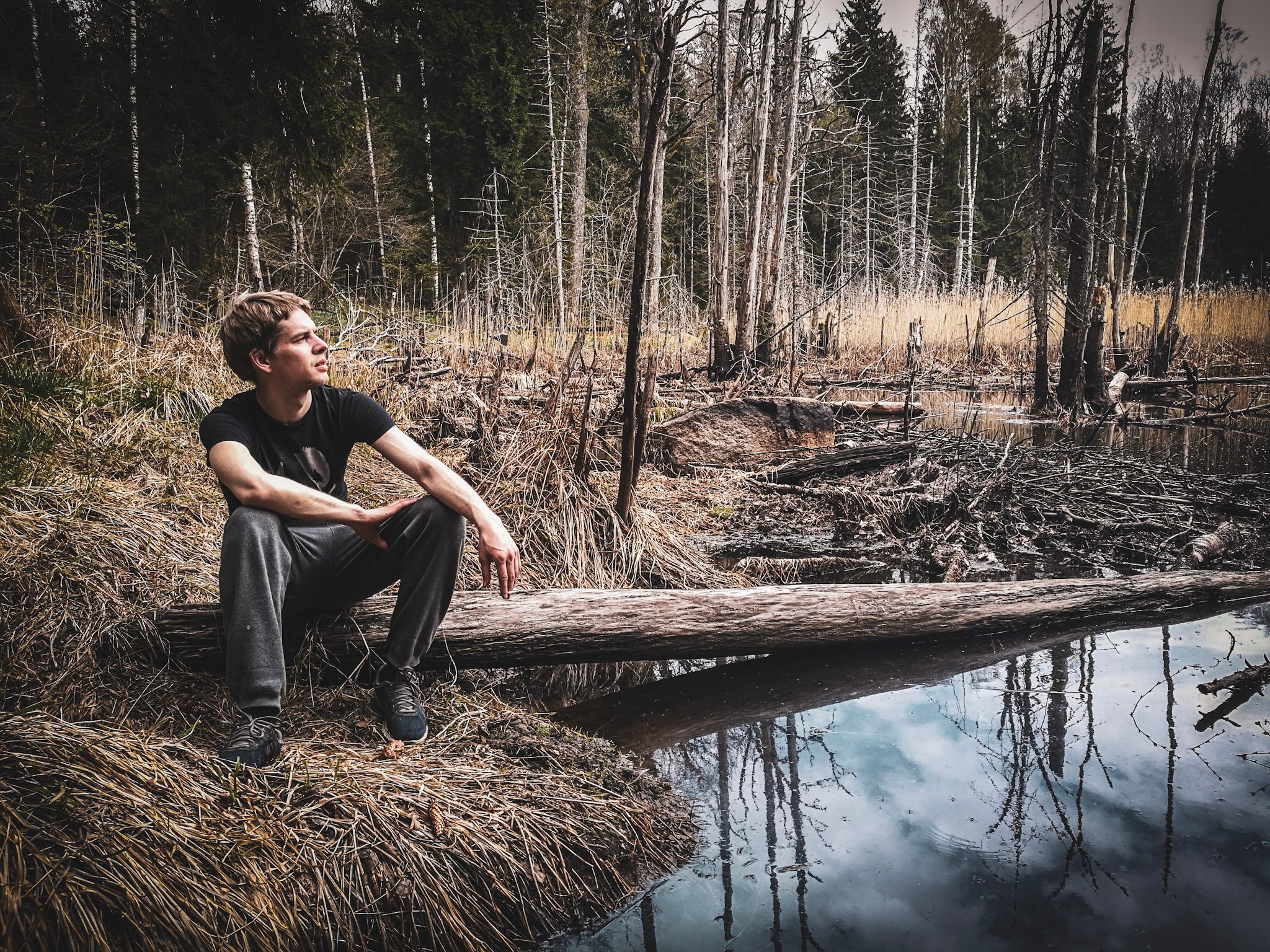
The forest around here is a maze, it is probably the spirits of an ancient royal forest still dwelling around and opens the passage only to the worthy ones. On a more serious note, we encountered many streams and bogs. At one place we even had to pass on a beaver damn as there was no better way through.
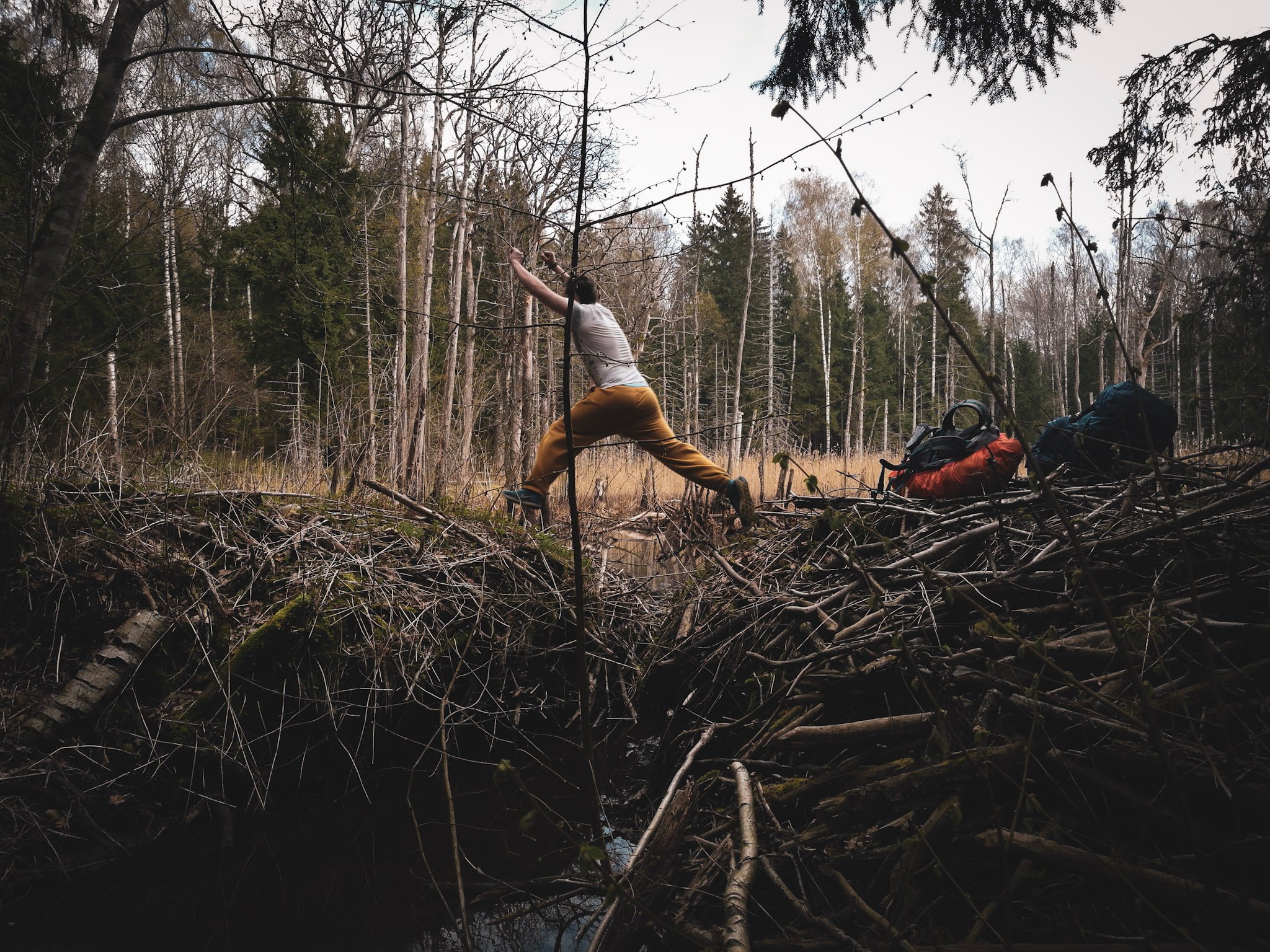
After 5 km we finally reached town Plateliai, it is the biggest settlement around Lake Plateliai and a good place to refill your supplies.
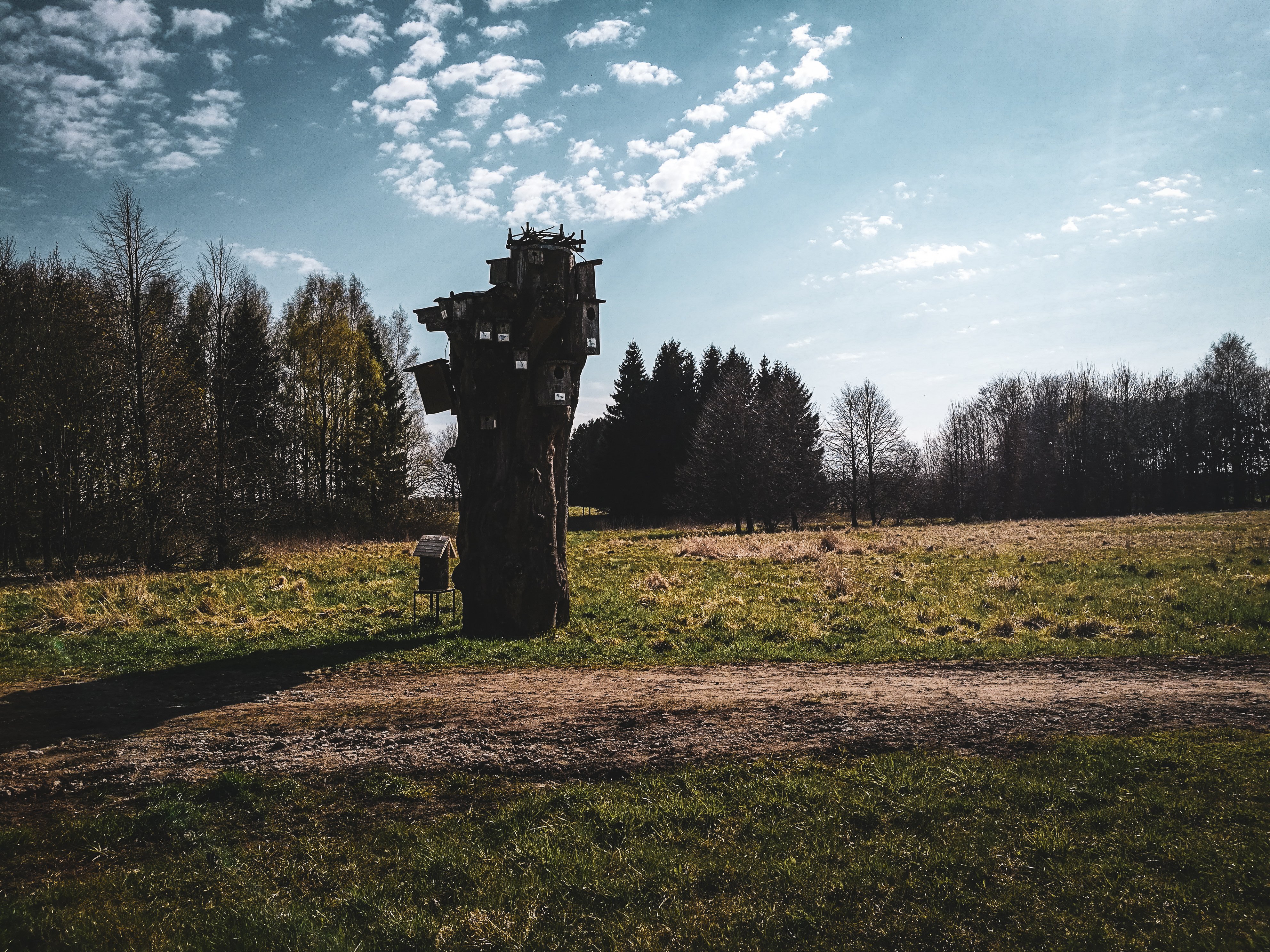
Plateliai
The first Plateliai were mentioned in historical record was in XV century. Back then the settlement stood on Šventorkalnis was it was connected to the Castle Island by a wooden bridge. The settlement started moving to a current location at the end of XVII century.
These days Plateliai is a popular resort town as lots of tourists come here for water-related entertainment on Lake Plateliai and historical significance of the region. In 2008 Plateliai was named as the best destination in Europe for tourists for its preservation of non-material heritage by European Destinations of Excellence.
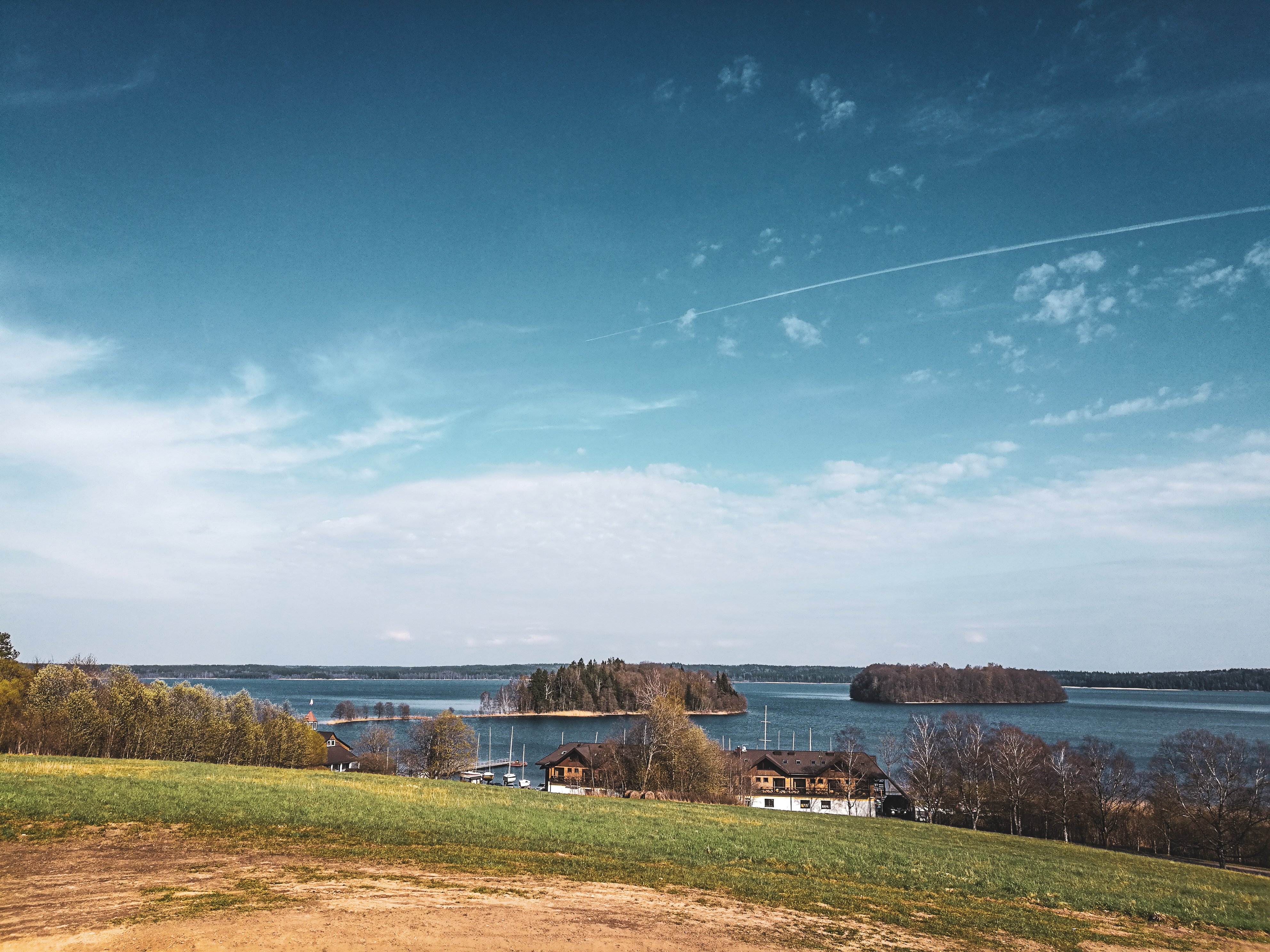
After refilling in a store we went to an observation deck on the edge of the town where an old Plateliai settlement on Šventorkalnis and Castle Island are visible. Straight from there, we entered a Šeirės educational track which we followed for 4km to reach our camping spot.
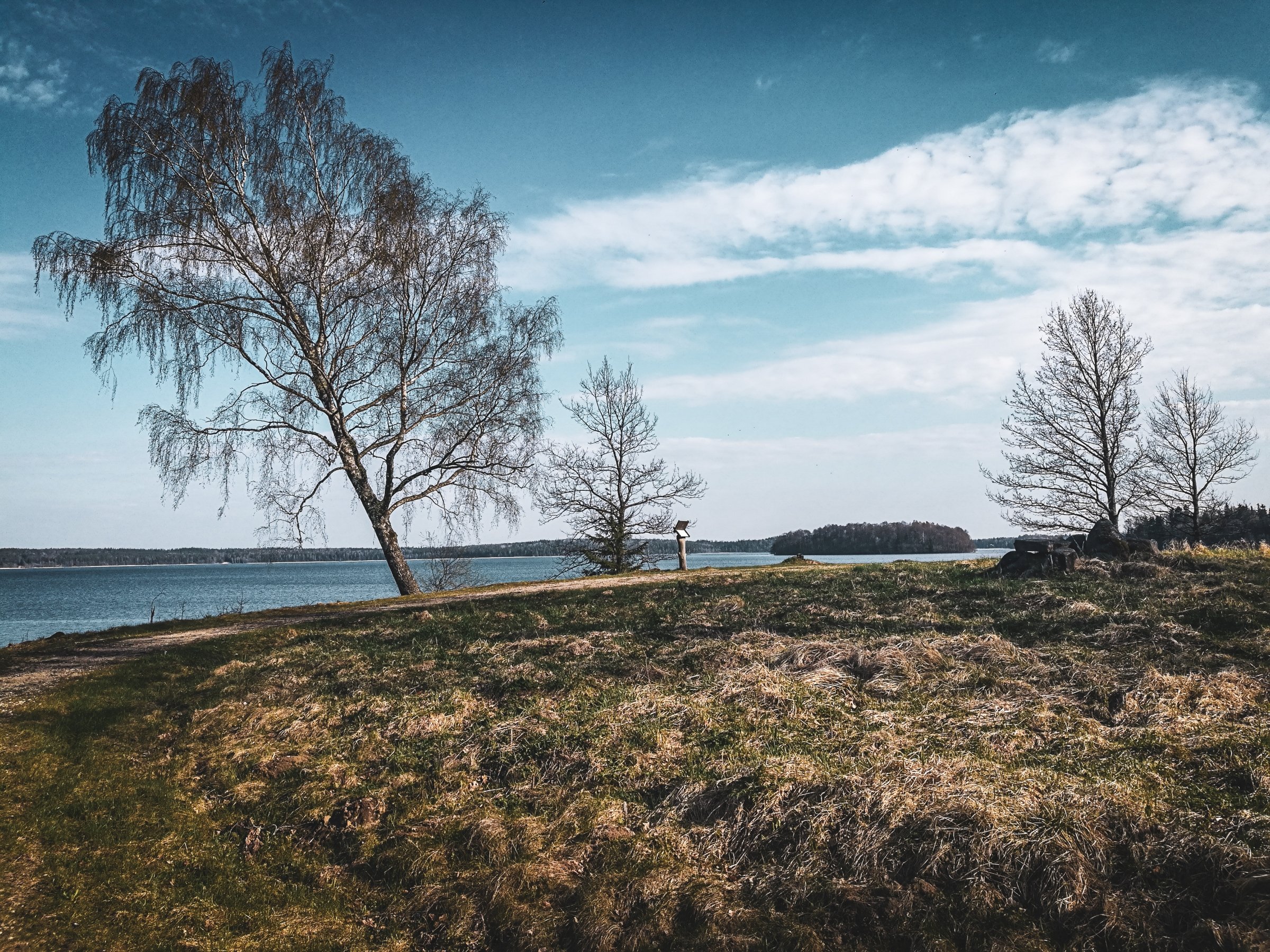
Kumelkaktė peninsula
On our way, we visited a small hill – Kumelkaktė ( Mare's forehead). As the legend says Queen Bona Sforza used to ride her mare on Plateliai Lake and whoever tried, nobody could shoot them, it is told that the bullet returned and killed them. Once when enemies attacked Plateliai Castle, The Queen took her gold and tried to run to the Northern part of the lake. Somehow one bullet hit mare's forehead and they both sank. Why that time the bullet was stronger than queen's magic is uncertain as stories vary. But what is know that ever since that peninsula nearby is called Kumelkaktė.
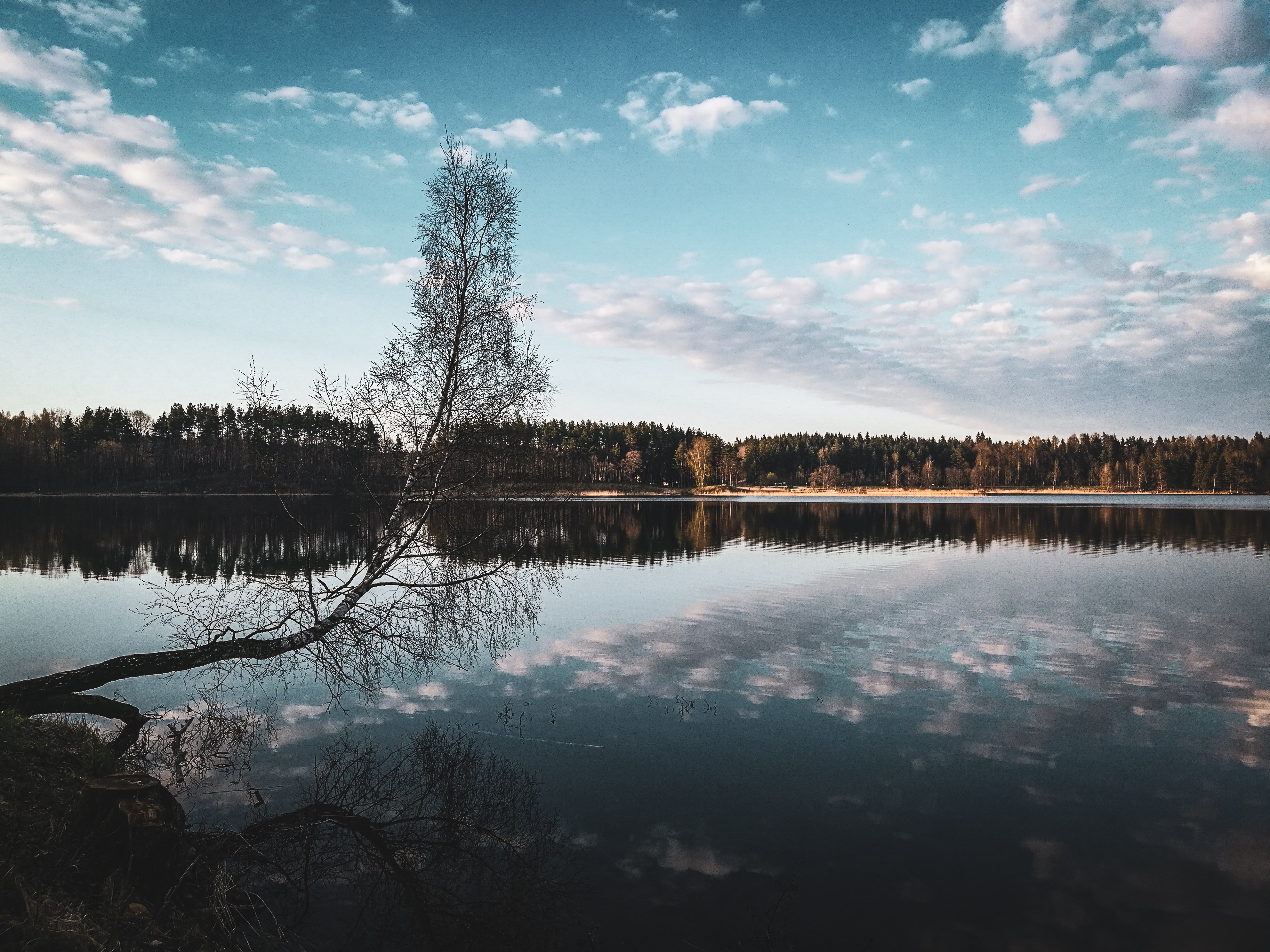
Campsite Ąžuolų Sala (Oak Island)
Our camping spot was on a next peninsula on the northern edge of Lake Plateliai, it offered amazing view almost from all angles. Even though the sun was still setting in the woods it was able to color trees, clouds and the lake in front. We built our camp near the shore of the lake and enjoyed all of it while cooking or just chilling near a fireplace. It seems that the campsite is private and supposed to be 4€ per person, but we failed to understand how to pay for it. Maybe, because it's not a season for camping yet. It was a bit windy during the night because we put our tents near the lake, but overall, we had a way better sleep than the last night.
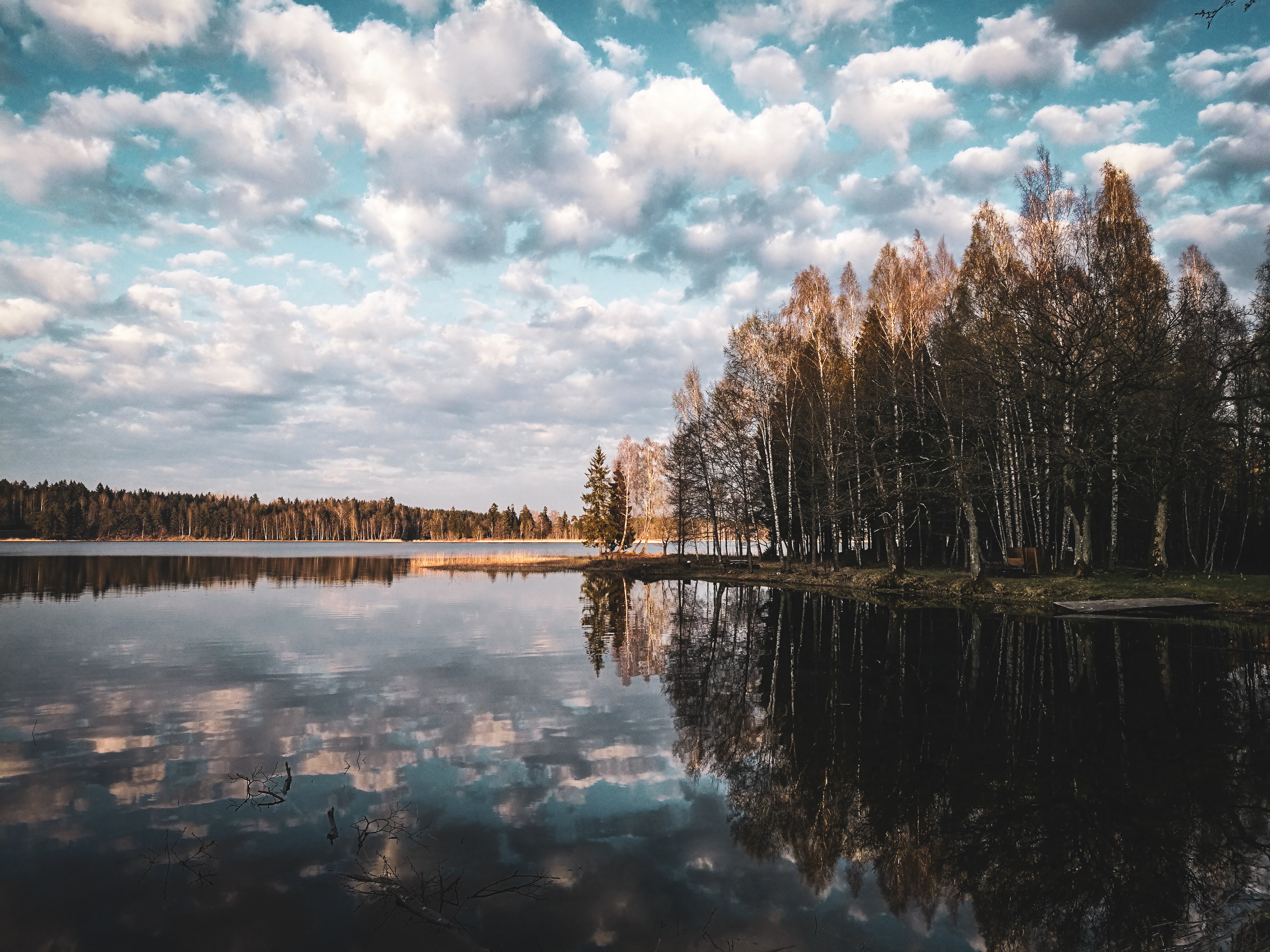
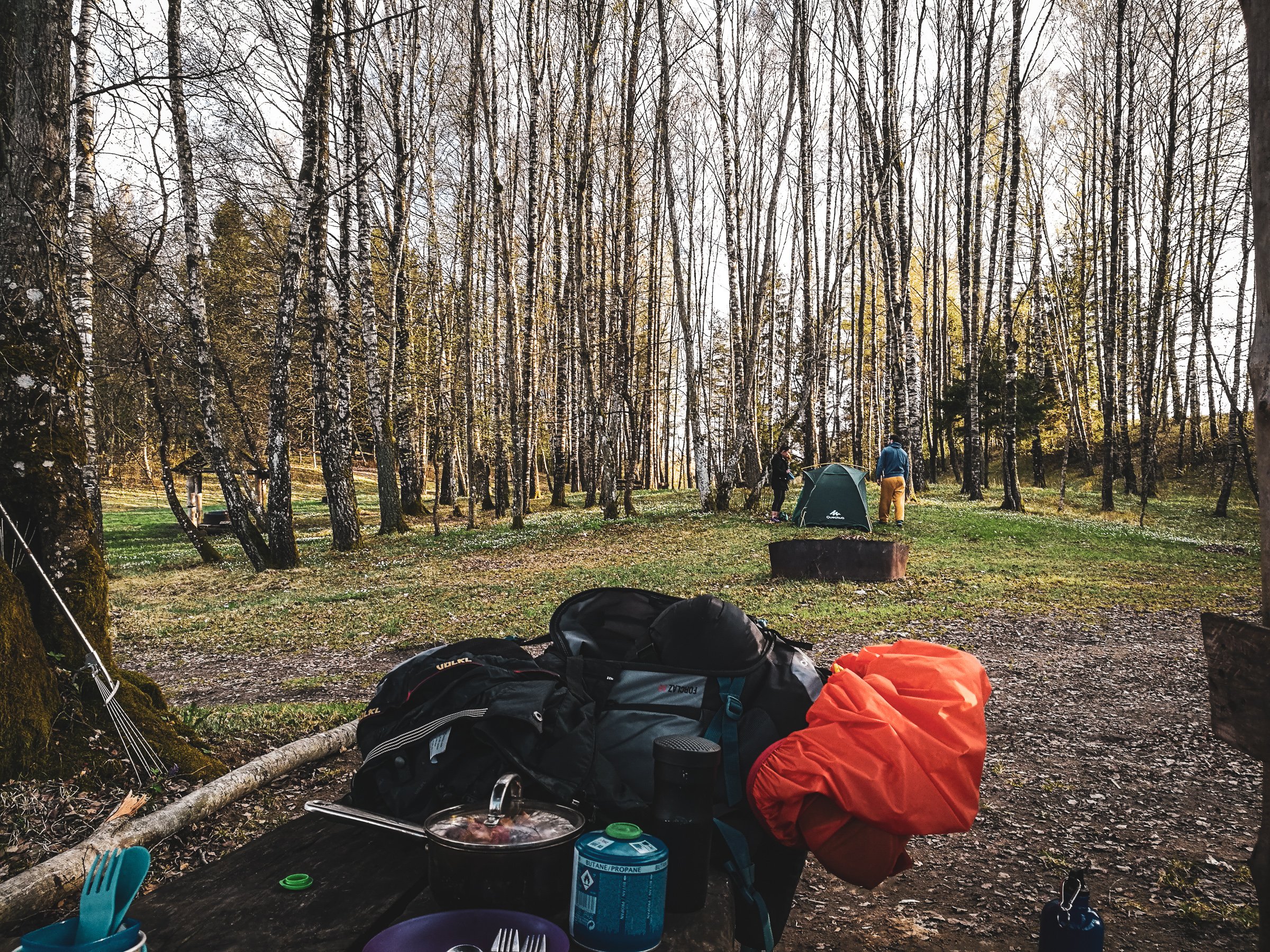
Trek around lake Plateliai: Day 3
The morning was way smoother than the last one and after fast breakfast, with coffee, we moved on our way. Just a few hundred meters we found a small Pilale hill fort, not the best view, but it is always nice to walk on the ground where medieval fortifications stood and try to imagine how everything was back then.
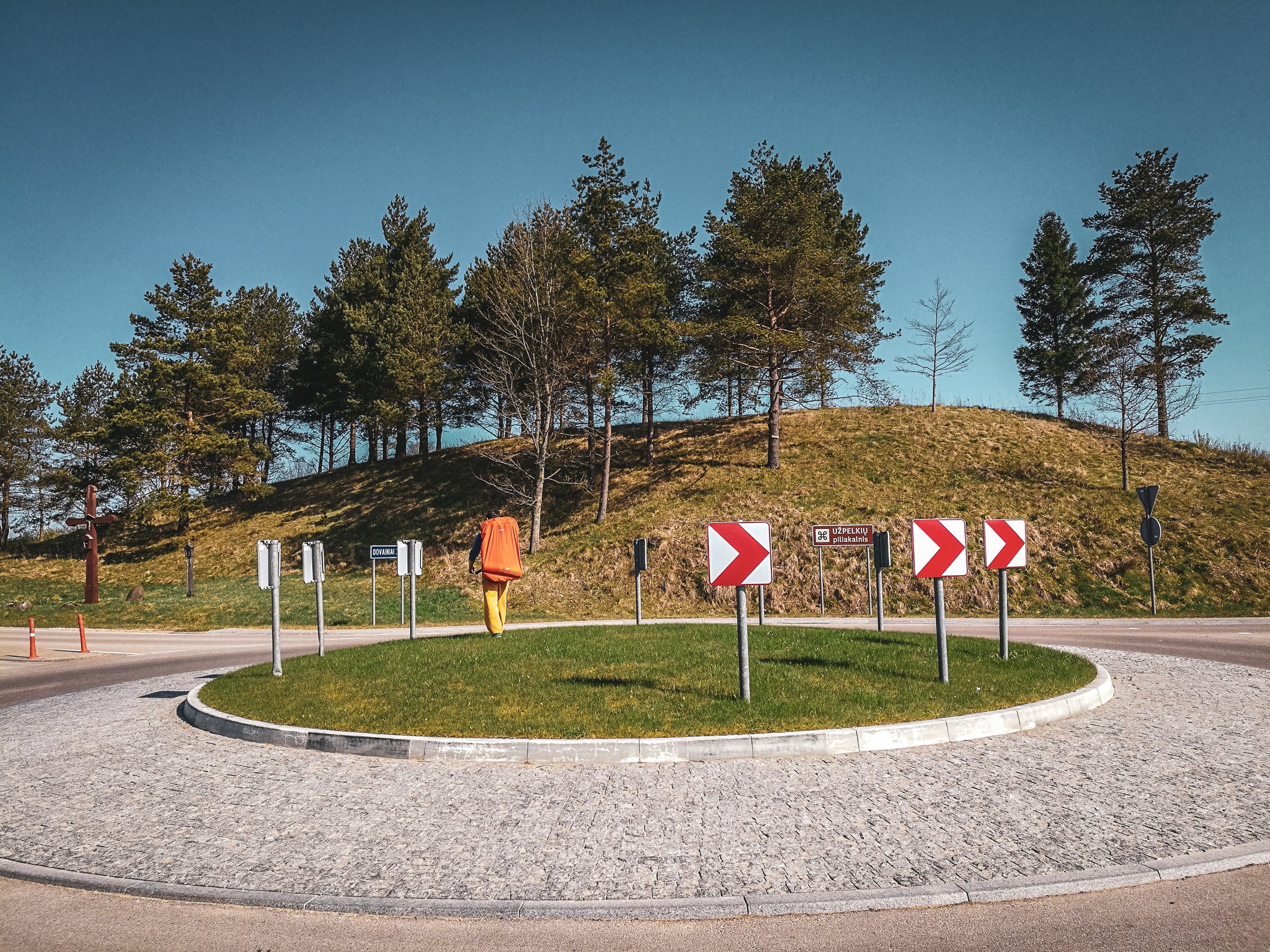
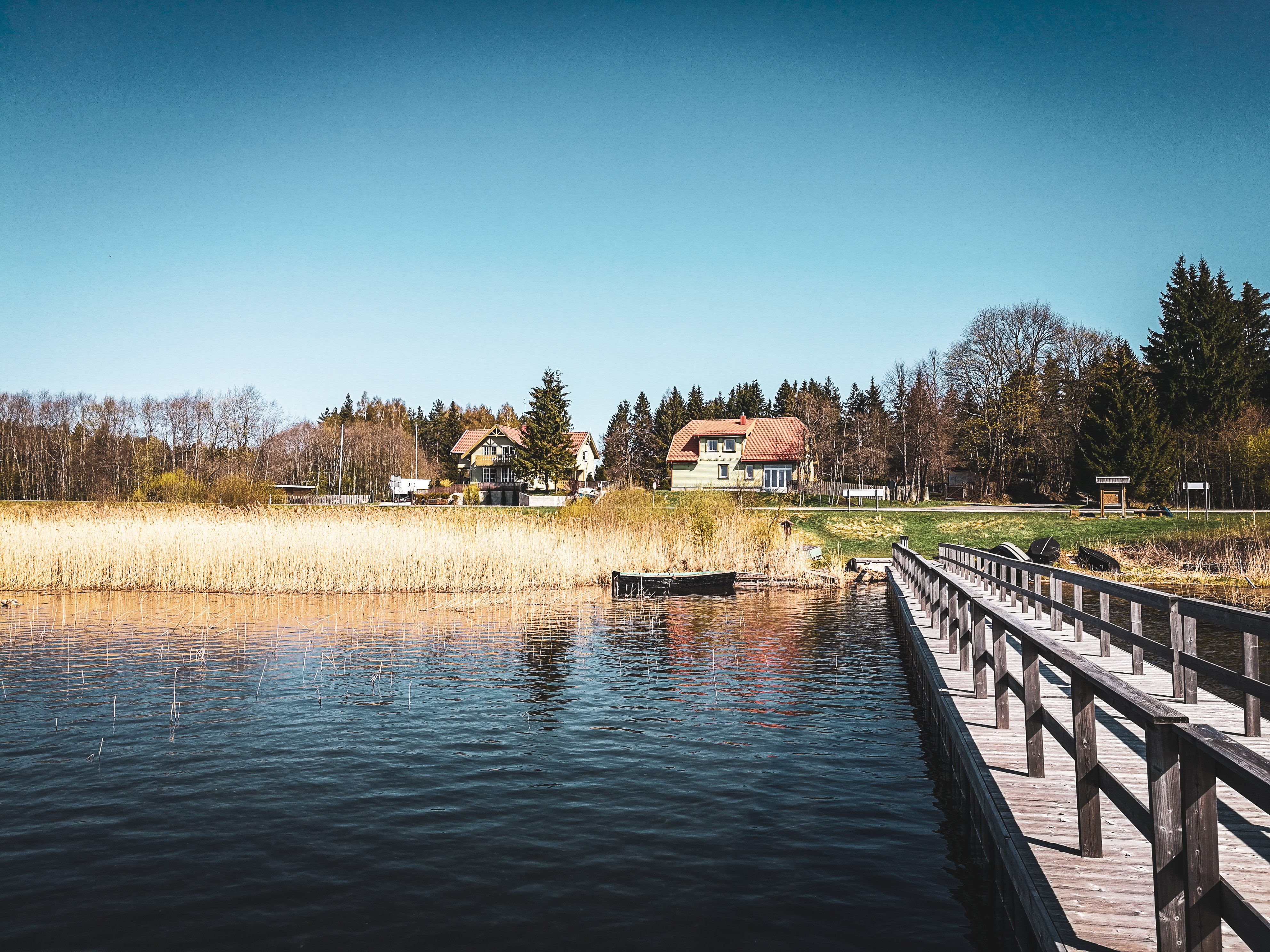

The further road led us on the northern shore of Lake Plateliai with a nice panorama of the lake which included a small island called Ubagsalė. As the old tales tell, in the past beggars used to come here from a nearby village for a feast. That's how the island got its name – Ubagsalė (beggars island).
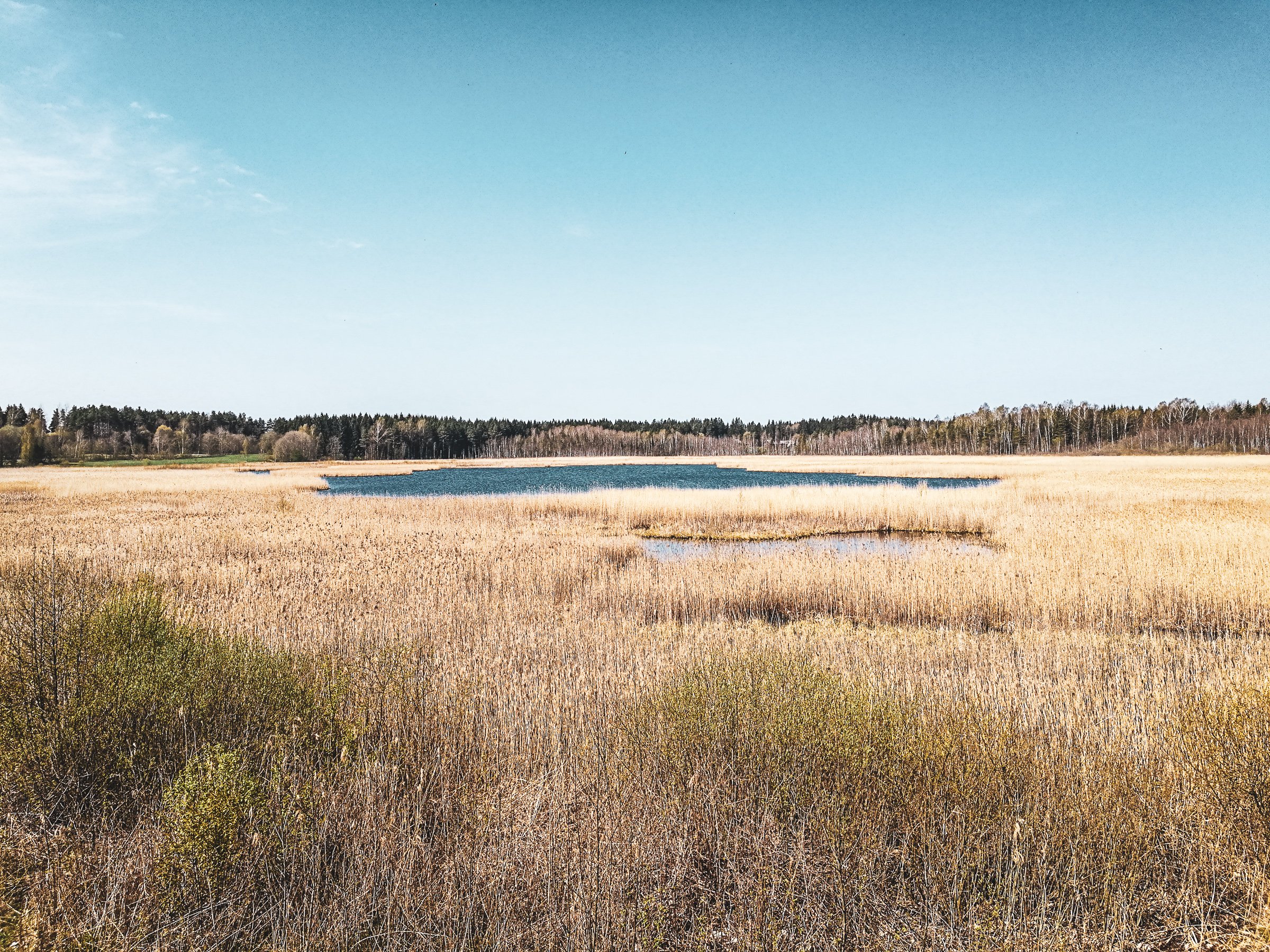
Bird Watching Cabin
Our road separated from Lake Plateliai and we headed 8km up north to Gegrėnai hillfort track. What I love about exploring that it didn't take long till we reached another interesting place. This time it was birdwatching cabin over a small lake. The view is amazing and you can learn about the local species. Apparently, there is an initiative to build places like these to teach people about endangered species in Samogitia National Park.
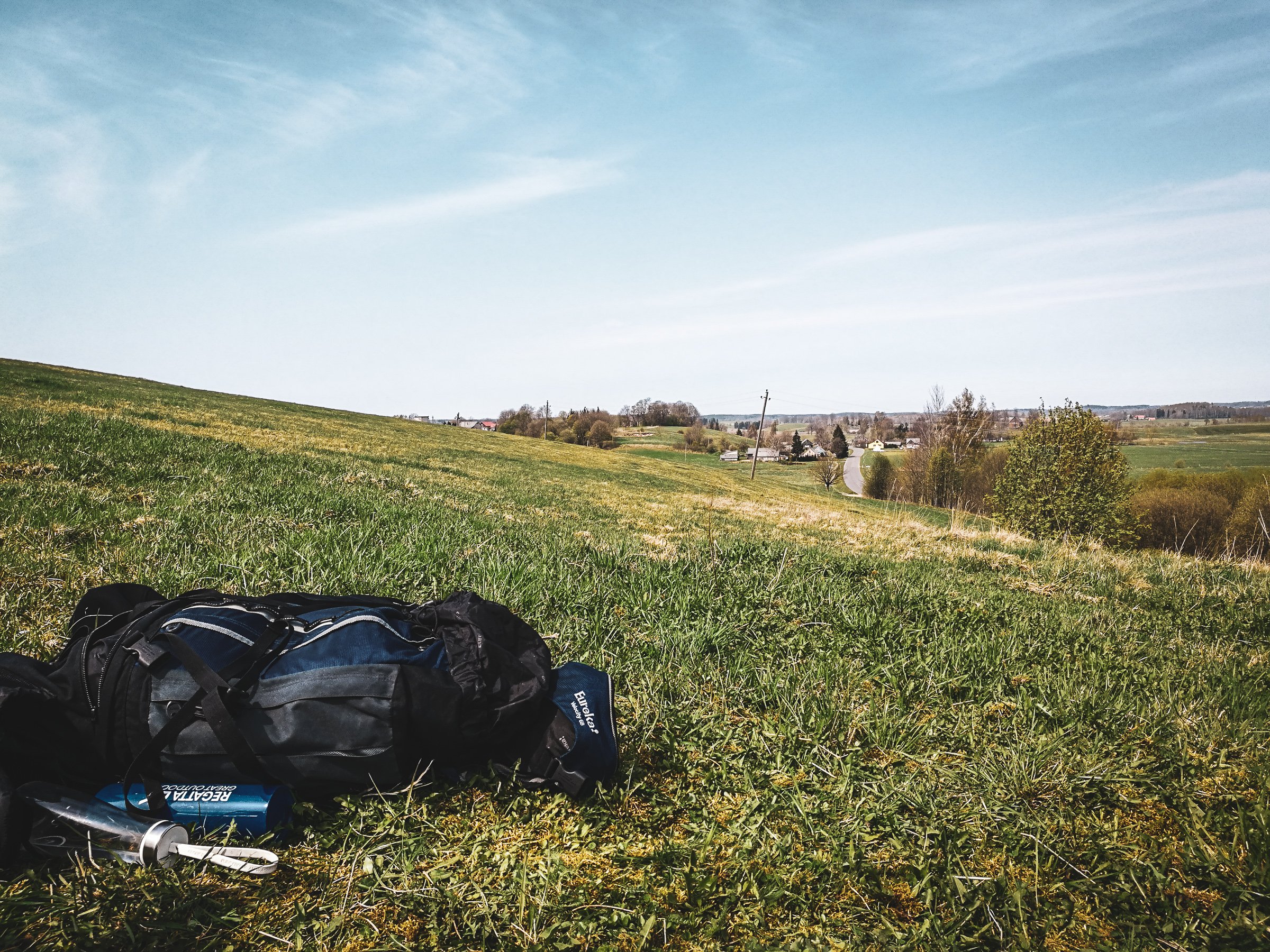
At Gegrėnai we first stopped for a lunch on an old graveyard which looked like a normal hill. After a short break, we headed towards the Gegrėnai hillfort track.
Gegrėnai Hillfort Track
The whole Gegrėnai Hillfort complex includes two hillforts in both sides of an unnamed stream, two graveyards, ancient settlement and plenty of burrows.
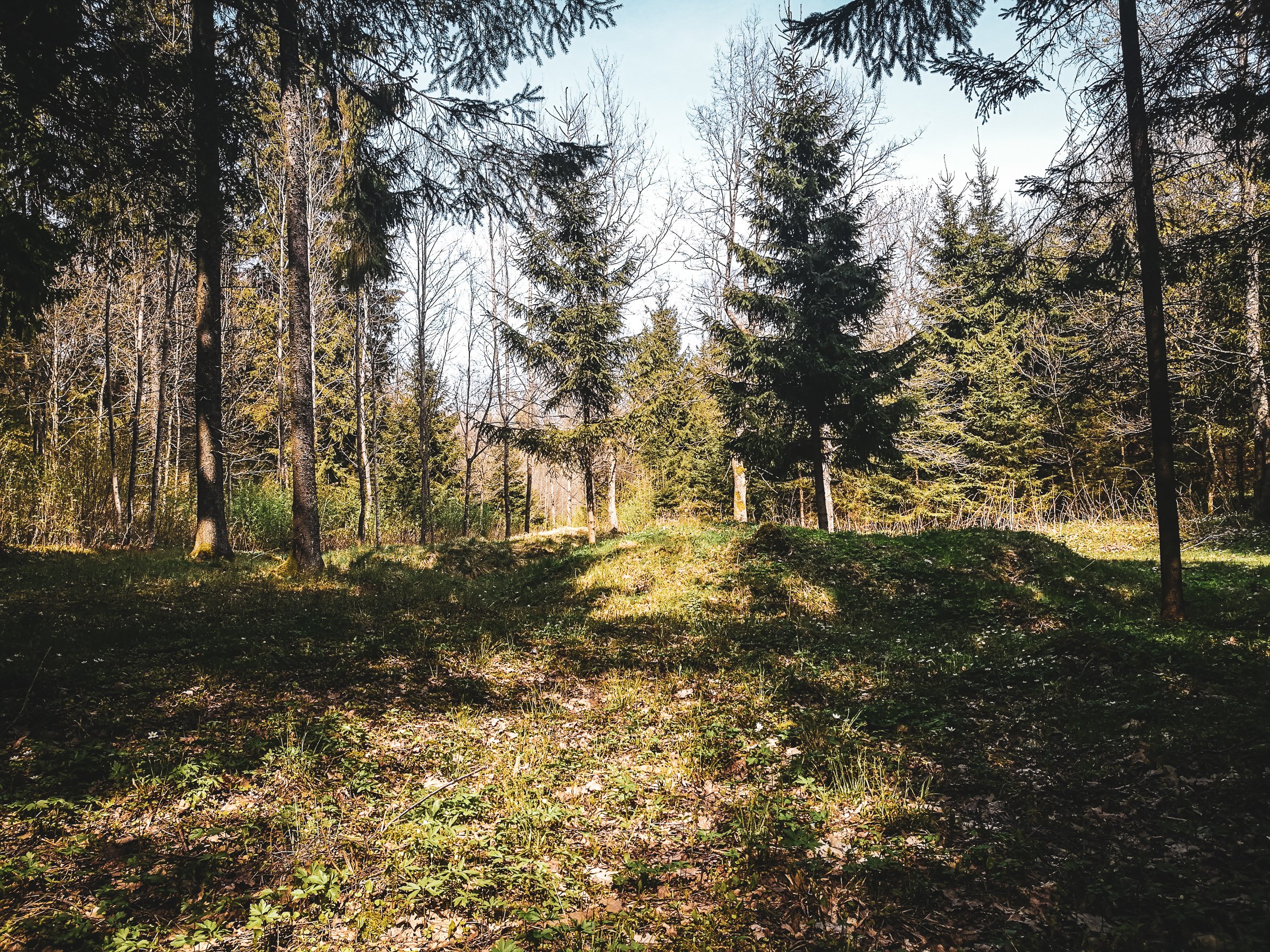
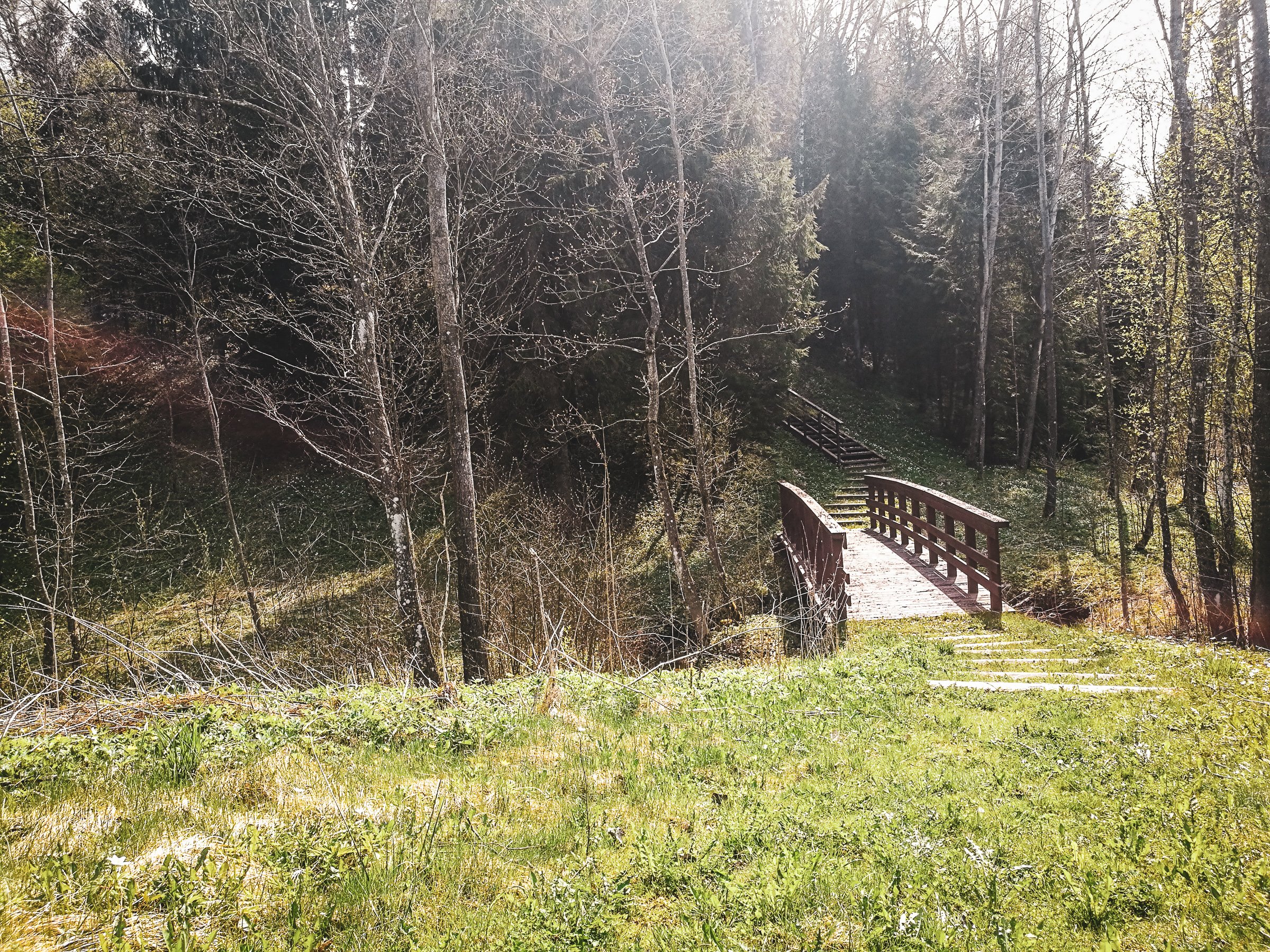
It guessed that at this place once stood Curonian Ceklis lands Castle called “Gegre”, it was mentioned in 1253 historic sources and was the main castle of the county. Based on other hillforts found in the Ceklis lands, it is guessed that in this territory once were about 10 to 11 counties governed from a castle like this one.
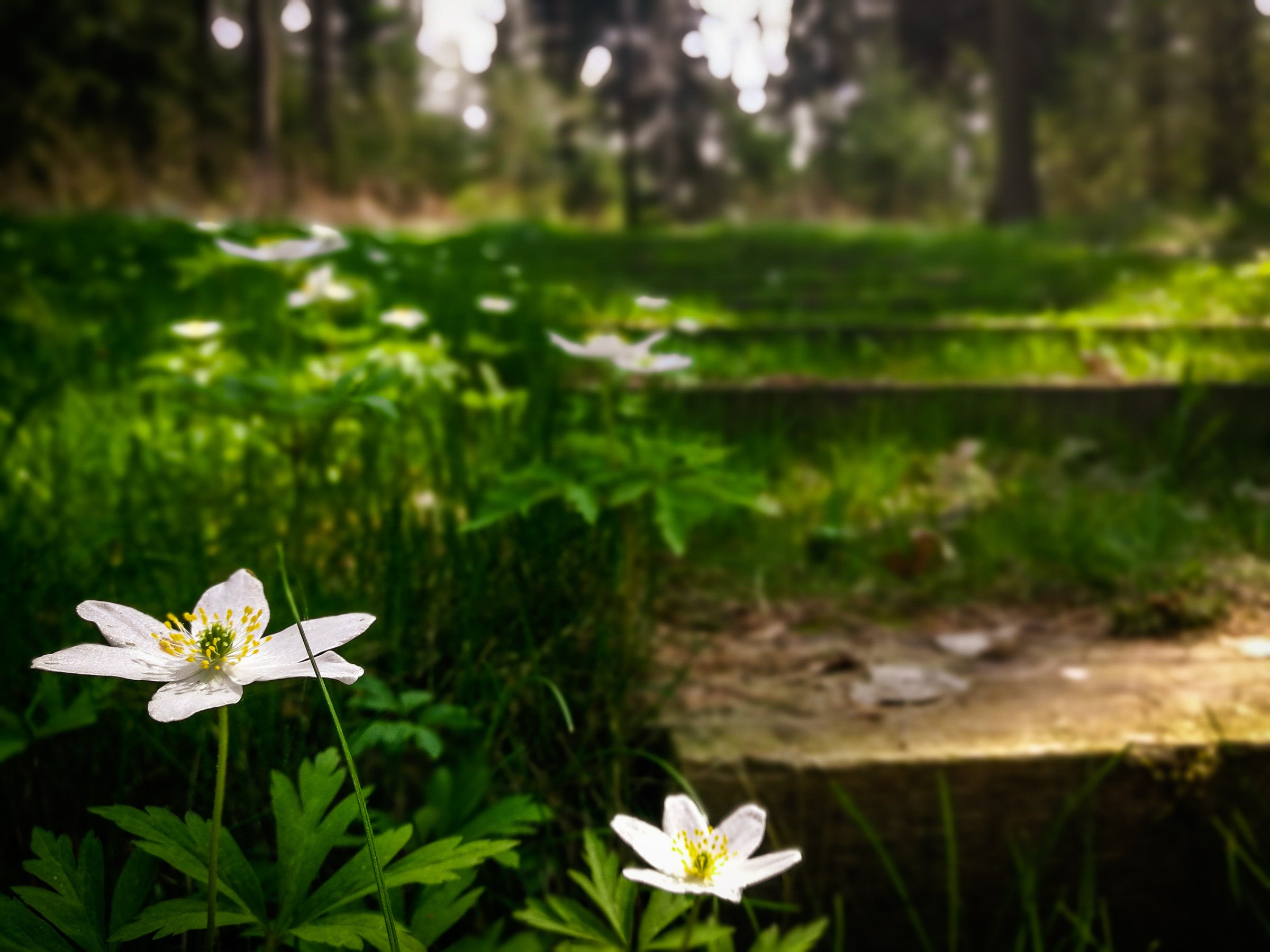
On the left side of the stream, you can find a smaller and older hillfort with a size of 48 x 27 m (52.5 x 29.5 yd). Further south, on the other side of the stream, in a way bigger hillfort of 100 x 110 m (109 x 120 yd), once stood a newer castle. It is thought it was built when there were too many people around for the smaller hillfort defensive settlement.

After the hillfort, we hit the dusty road again and walked for 7 km to the energetic labyrinths and geometrical forms park. The road was not as boring as expected and just after 2 km, we entered a dark and dense forest. It was full swamps and, sadly, we found a few trash fireplaces. At least it was in wet places, so it was impossible for it to spread. Still, it is not good for a local and global environment.
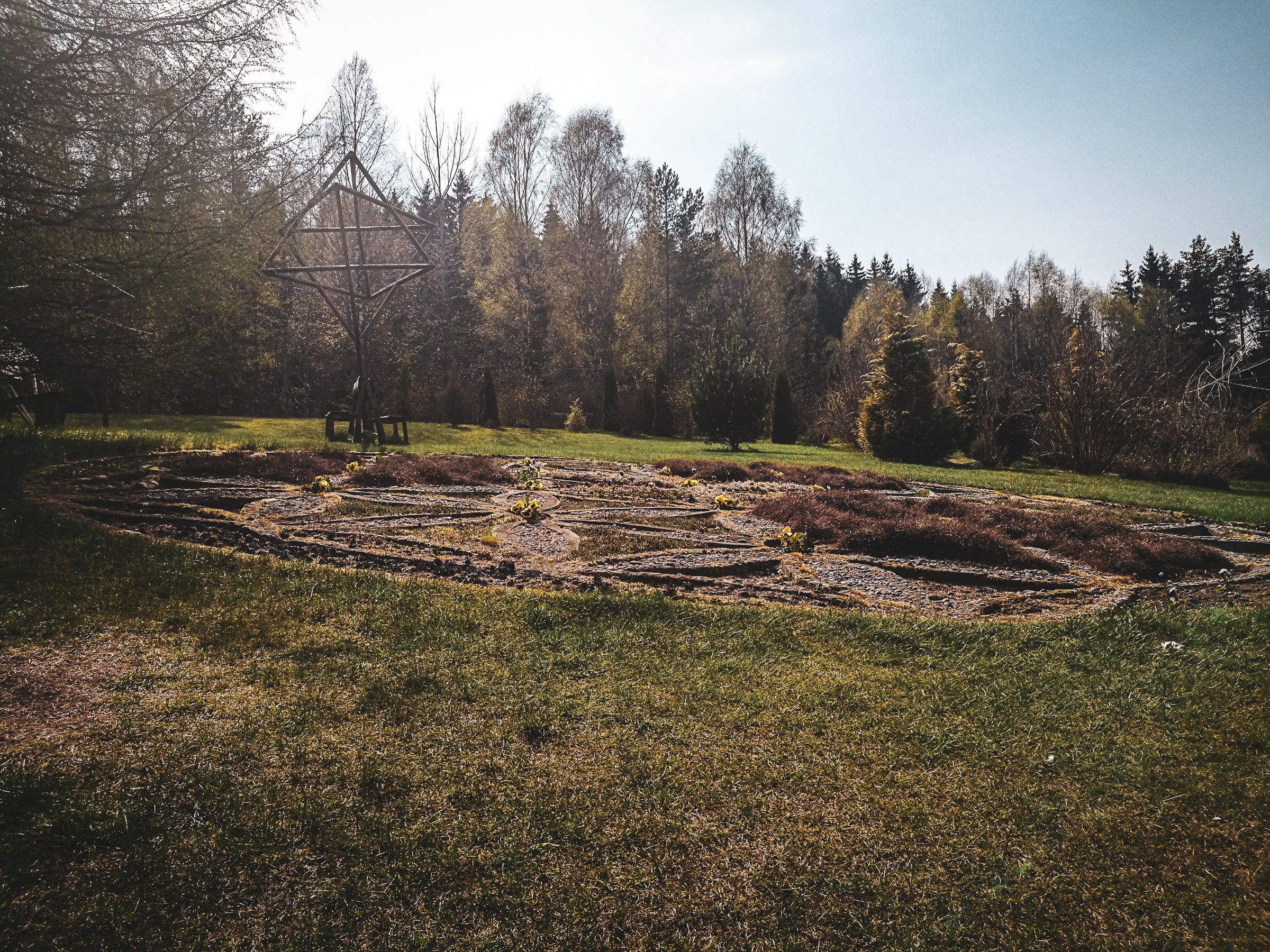
Energetic labyrinths and geometrical forms park
This is the somewhat exotic place, at least to me or any other person who never encountered anything like this. To explain it shortly, let’s do some labyrinths 101 with a short intro to it from the park itself:
It already existed around 4000 years ago, and they could be found almost in all basic religious traditions in the world. As well as pyramids, labyrinths consist of magic geometric forms, that create sacred space. Many people make a mistake thinking that energetic labyrinths are the same as the maze. However, a maze has impassable walls and lots of delusive turns, while energetic labyrinths consist of a single path, leading to the center and backward. It does not contain any closed walls.
Scientists these days tend to think that labyrinths affect the activity of a human brain. For example, when walking through a labyrinth path which suddenly turns 180 degrees – it causes one o your cerebral hemispheres of the brain to switch to another one. This process happens over and over again until you finish walking through the labyrinth. Using this method your brain starts working hard in a short period of time, hence the manifestation of many potential abilities and sudden power flows are possible. This is one of the reasons why it is believed that labyrinths perform miracles and change peoples’ lives. Bioenergetics scientists argue that geometric forms of labyrinths have their own energy fields that affect human energy fields. Once exposed to such energy, the human inside energy starts to feel harmony and peace.
I personally first time hear this field called bioenergetics, so doubt that the latter part should be taken seriously, but the neuroscience part f the brain makes sense. Anyway, be pragmatic and if you have a chance try it yourself.
There are quite a few labyrinths inside this park, but on their effectiveness, you can decide once you try something like this yourself as we were in quite a rush, it was already relatively late, so I couldn’t relax and test it well enough myself.
Another good thing for ice-cream or beer lovers, there is a shop here, where you can use a normal bathroom as well.
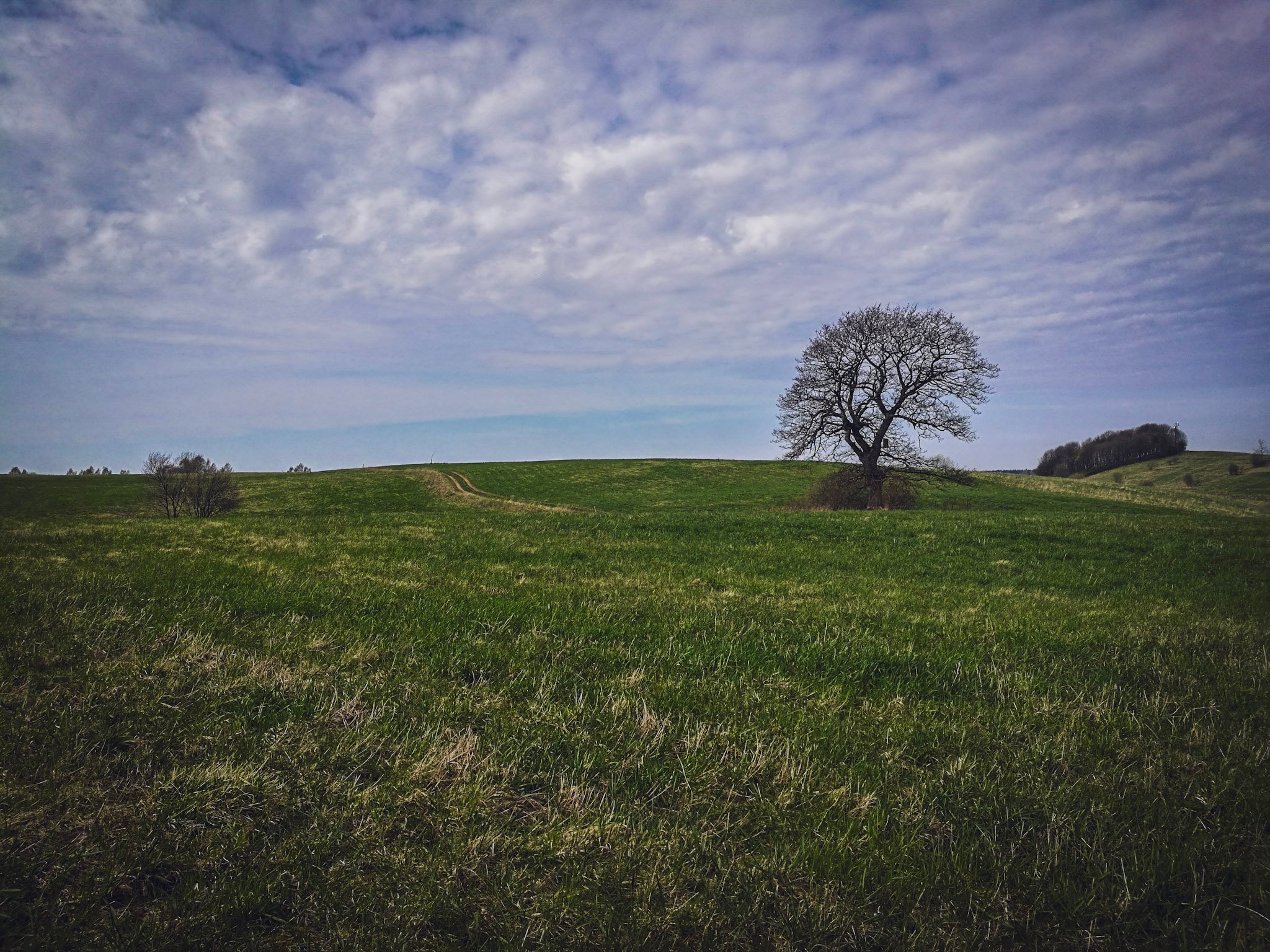
After cleaning our heads in labyrinths, we rushed out to our camping place near Paplateliai as it was getting late already. The path went through a cozy forest road straight to the town which seemed to be made completely out of buildings built for tourists.
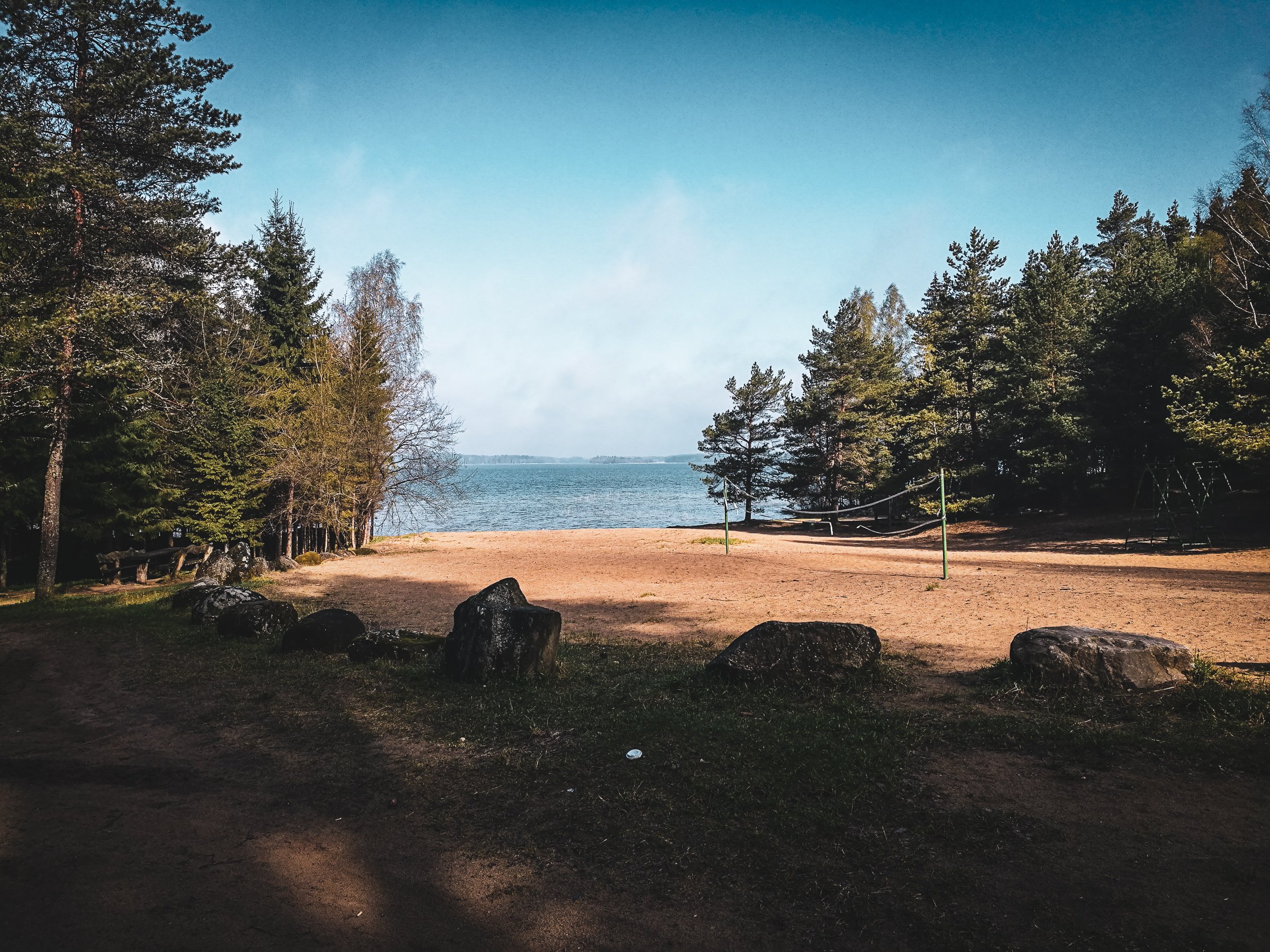
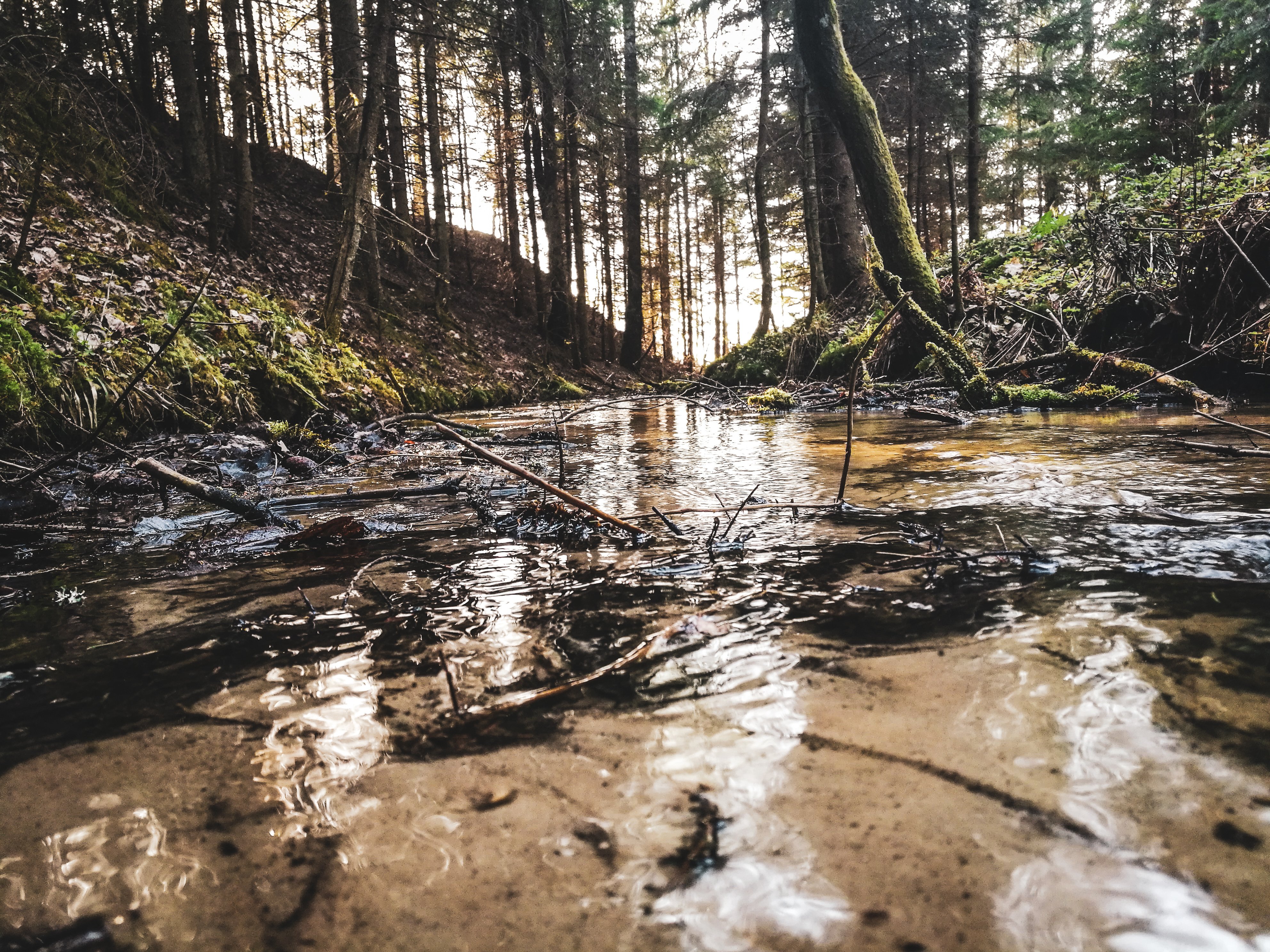
Plokštinė Campsite
This campsite seemed to be covered by Samogitia National Park visitor ticket. It lacked wood and was full of trash. The reason for it was obvious, the campsite surrounded a beach which offered a wonderful view over the lake. You could even see Castle Island on the other side of the lake and the Sunset straight into it. Even though the water was still very cold, a lot of people came here to chill and we had company until it was really late.
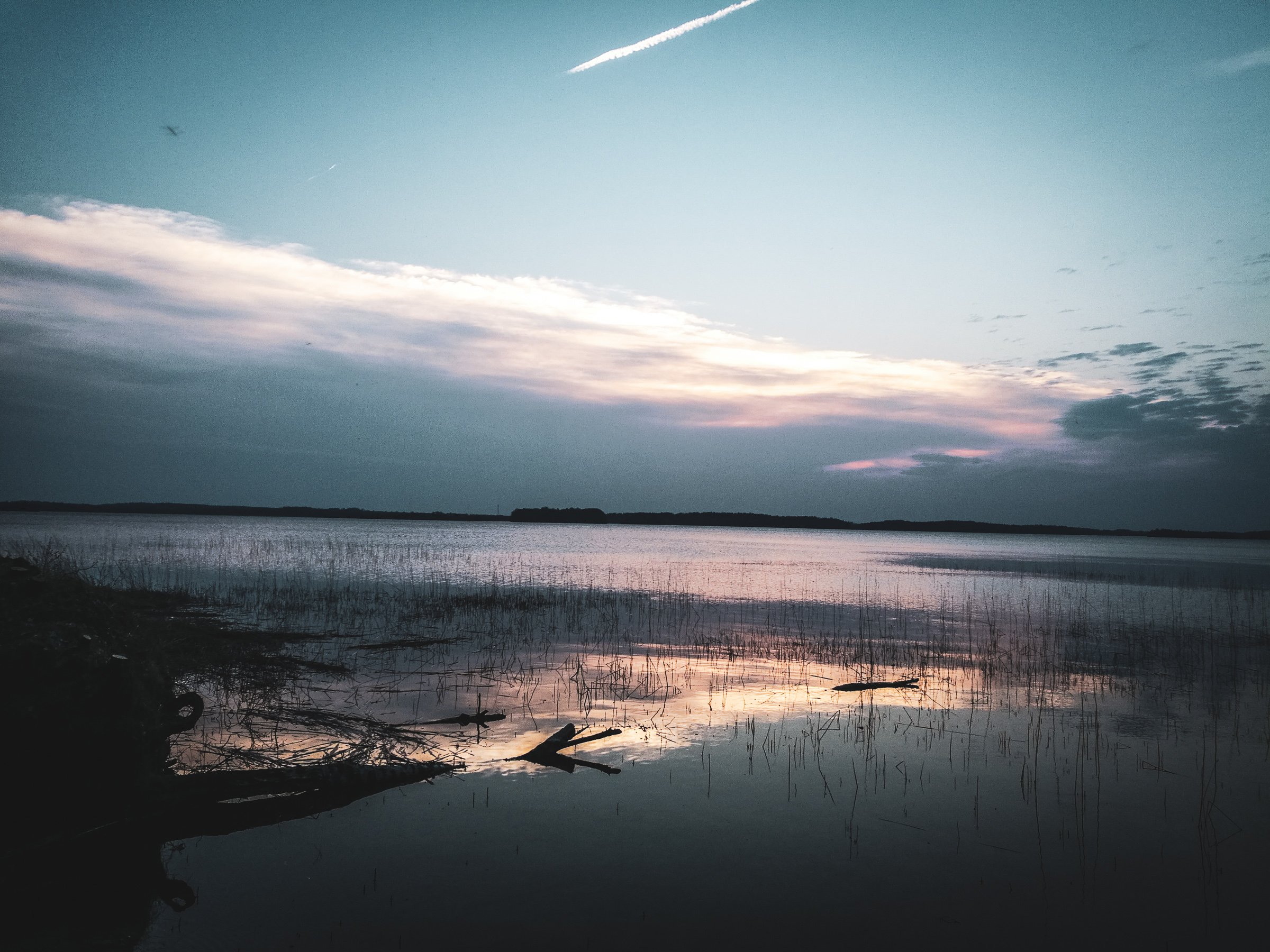
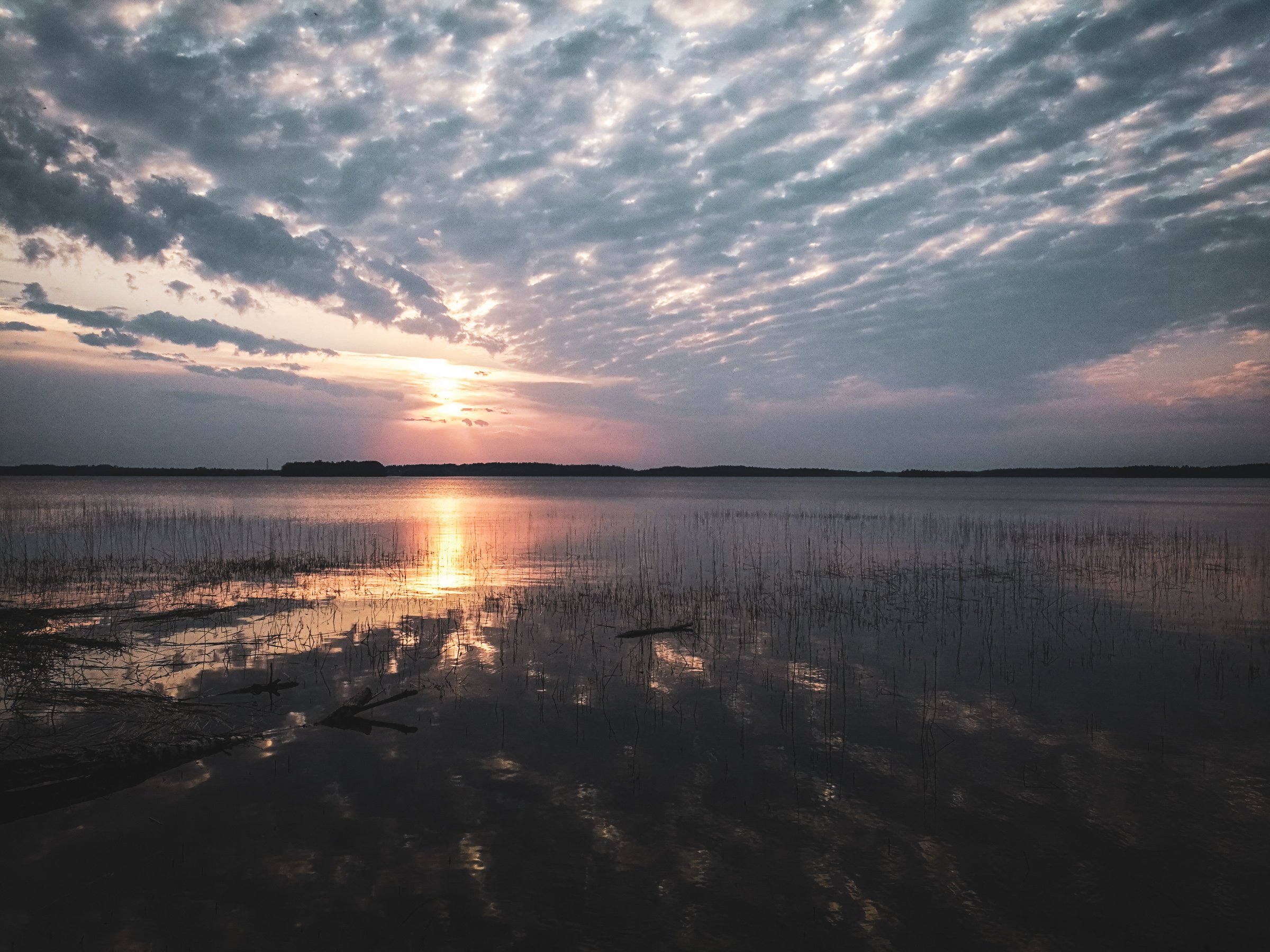
As we chilled near a fireplace we knew that the storm was coming. It was late and we decided to go to sleep. Just when I went to bed I was told by a friend that nearby city Klaipėda is under a heavy storm. I rushed out to the lake with my friend to look if we could see anything far away over the horizon. Just as we went out the first lightning struck, we went to the lake and it is hard to describe what we saw. It was a constant lightning in three different places at, any time. Even though it was pitch black dark already, the lightning made it clear as a day from time to time. After several minutes of observing this beautiful destructive power of nature, it started to rain and we had to go to tents.
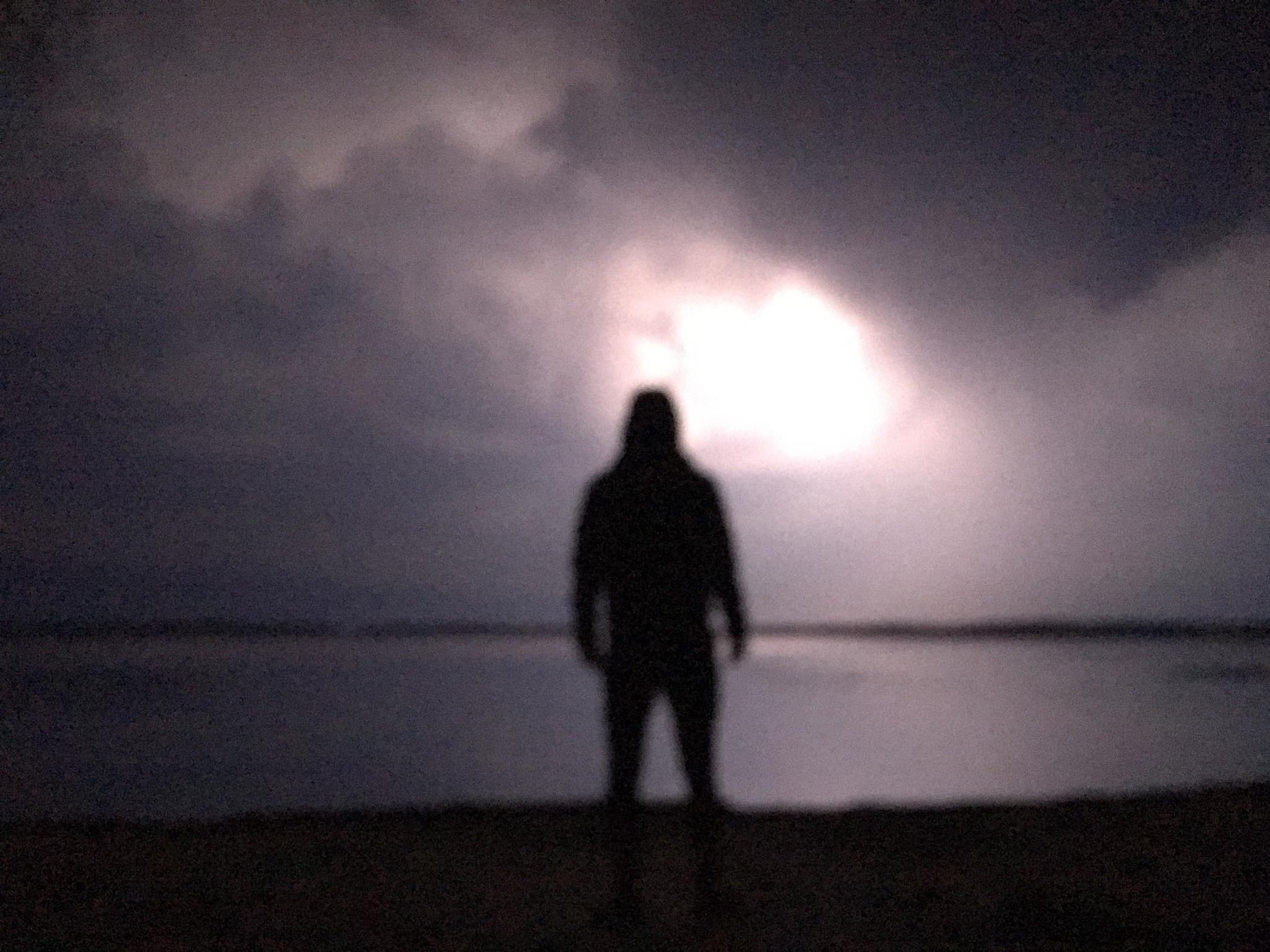
Trek around lake Plateliai: day 4
We woke up alive, dry and apparently everyone had a good sleep. We were too tired to be disturbed by the nights lightning show. After unpleasant packing and a warm cup of coffee, we rushed out to the Cold War Museum. We camped not too far from, only 3km away, near Paplateliai, in Plokštinė campsite.
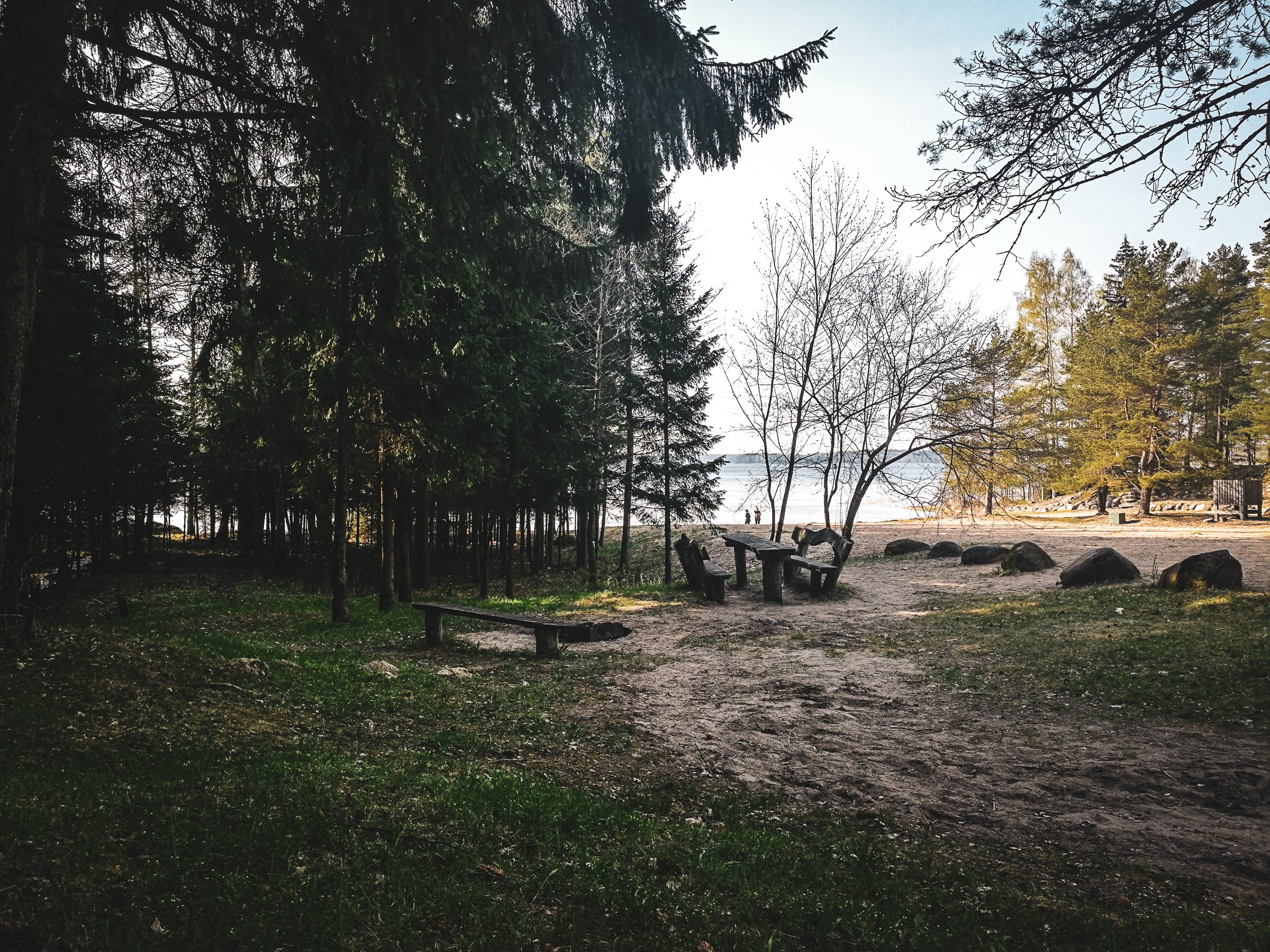
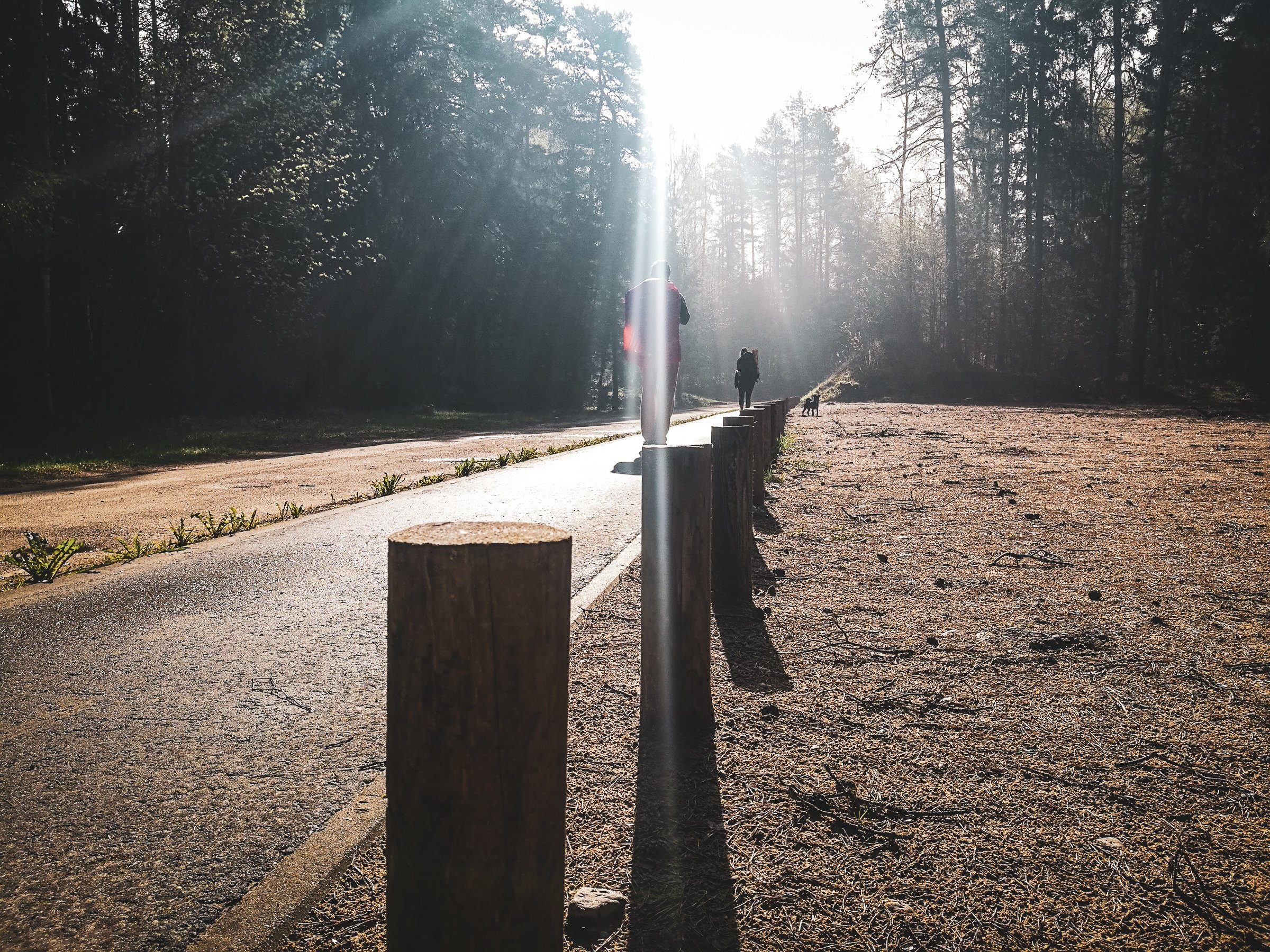
Plokštinė missile base
As I mentioned before there is just too much to talk about inside Plokštinė Missile Base, so I had to write another article. I’ll add an excerpt from it and if you want to read more just click on the link below.
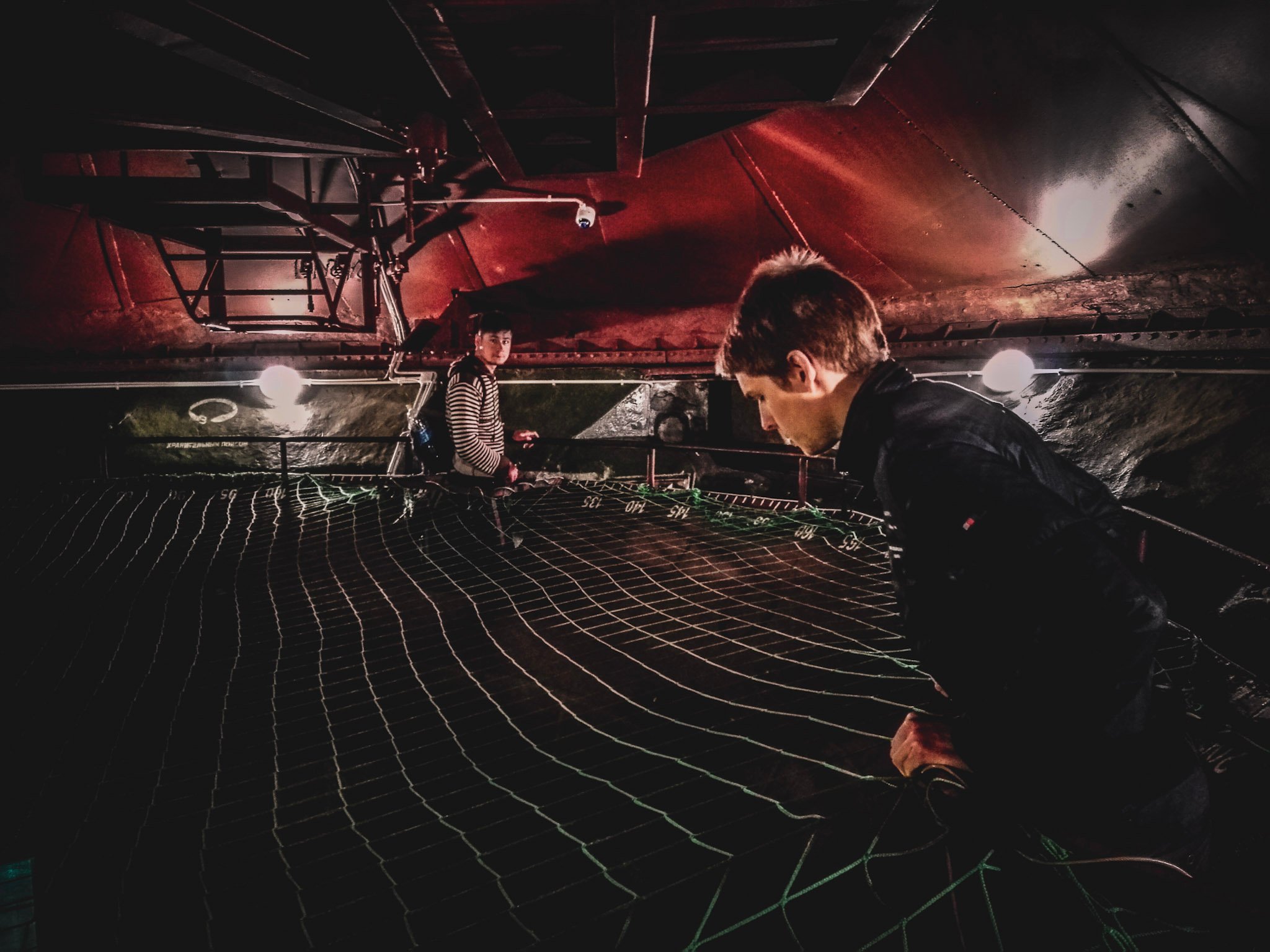
…What is used to be the most complex ballistic missile armed with nuclear warheads compound in Lithuania, to this day, Plokštinė missile base is surprisingly well preserved. Today, inside of it, you can visit the Cold War Museum, which reminds us of the history, which must never be forgotten. During this war, for the first time in the history of men, humans became capable of destroying itself…
Read the full article on my blog: http://ctdots.eu/places/lithuania/plokstine-missile-base/
After walking, more walking
After the museum, all is left just a 7 km to the bus station near Bebrungėnai watermill, which will take us to Plungė for a train back to Vilnius. The funny thing that after three days of walking with 15 kg backpack, walking 7 km was easy as it's ain't nobody's business.
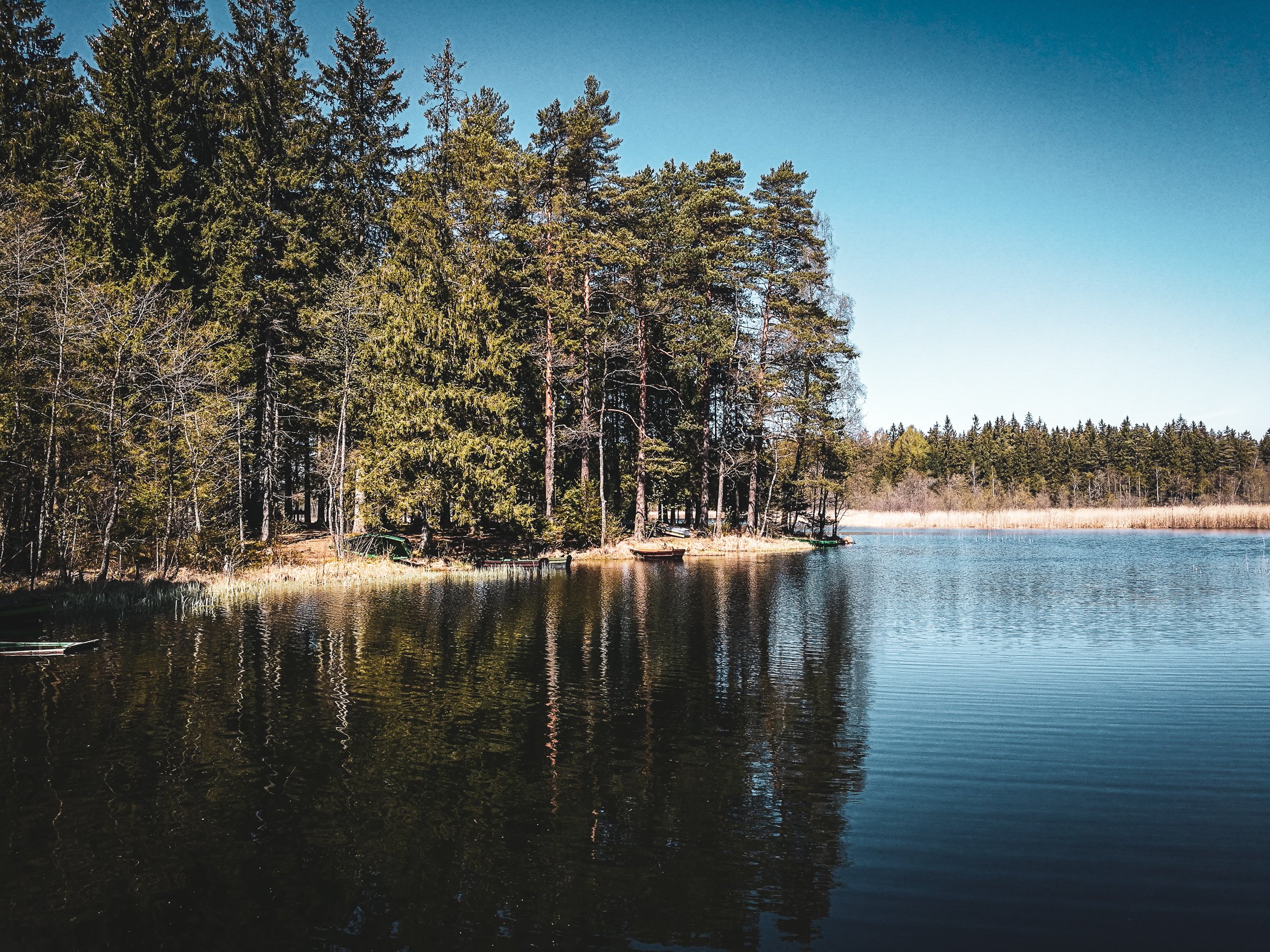
Samogitian Dialect
We returned without any big adventures, just one thing to mention, if you ever end up in this part of Lithuania as a foreigner, don’t imagine that people from the city understand what people are talking. Yes, every Lithuanian speaks Lithuanian, but the dialect in some parts of Lithuania, especially Samogitia, gets so extreme that I personally understand bellow 50% of what people are saying to me. On the other hand, they speak a way more archaic Language than I do and some linguists even consider it as a different language. Samogitian is the most archaic dialect in the most archaic Indo-European language in the world, so if you want to hear how the old language sounds, it might be a good idea to go to the countryside of Samogitia. Just don‘t expect the older generation talk English as well.
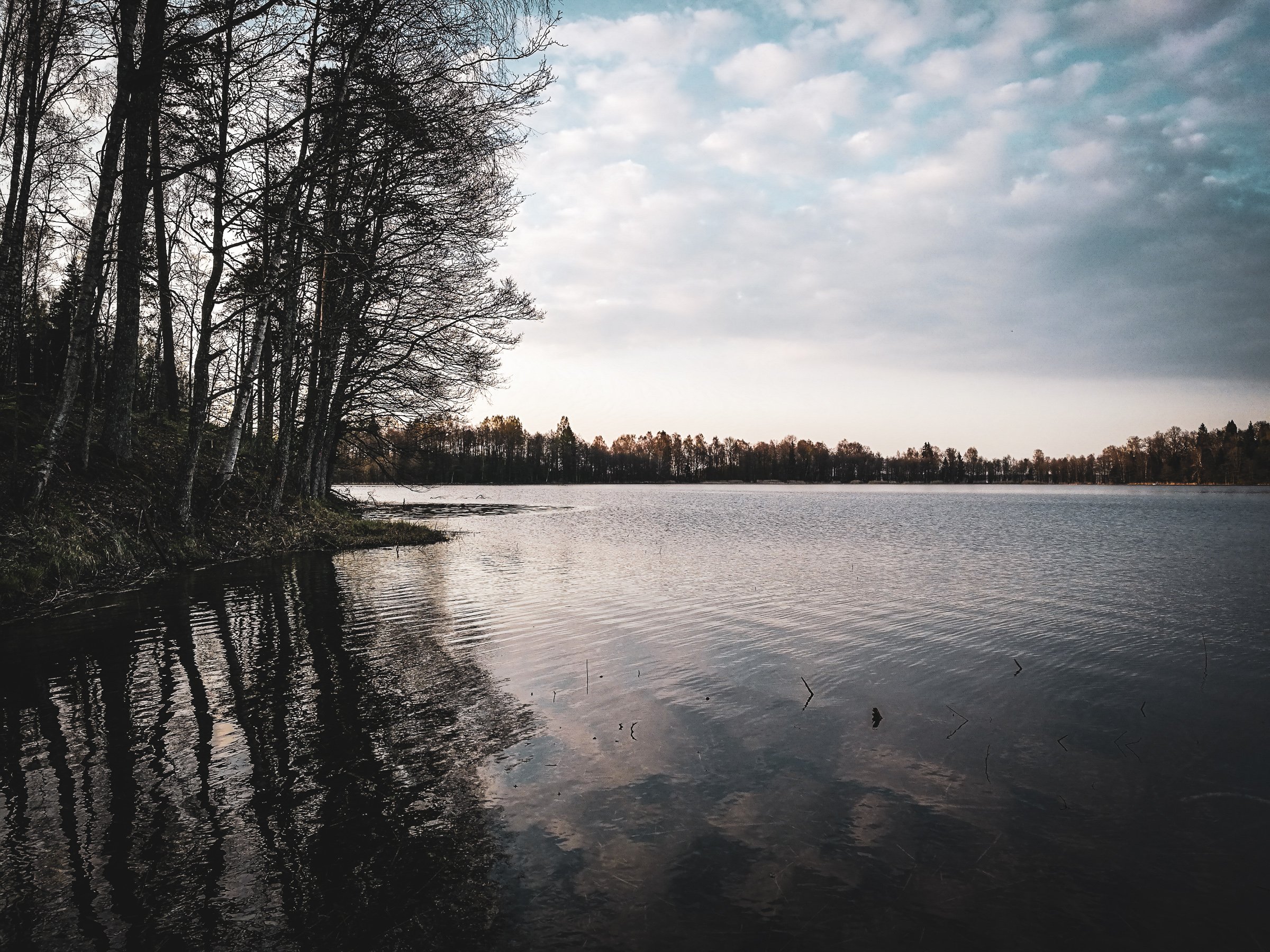
SEEK.SHARE.CONNECT.THE.DOTS
To sum up, on this journey we were able to see not only the beauty of local nature and its surprises but also a lot of historic places which goes from medieval ages to relatively recent cold war times. And all of that is just a small part of a very small country up in the north of Europe. You have to keep wondering, keep exploring and nature will show its miracles to you.

Every Thursday something new from my travel adventures
Author: Mantas Ališauskas
Photography: Mantas Ališauskas, Doskinas
Design: Mantas Ališauskas
Website: http://www.ctdots.eu

